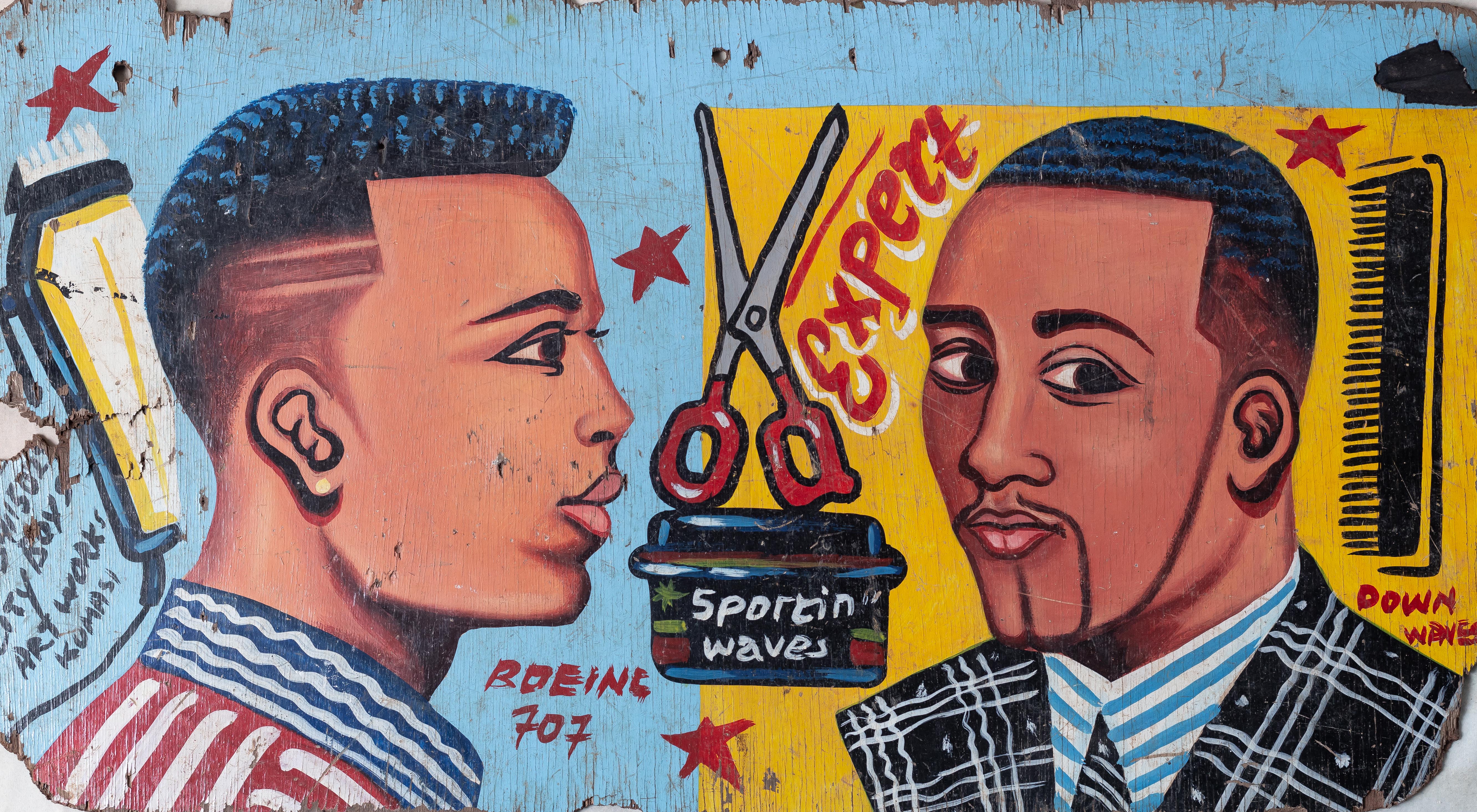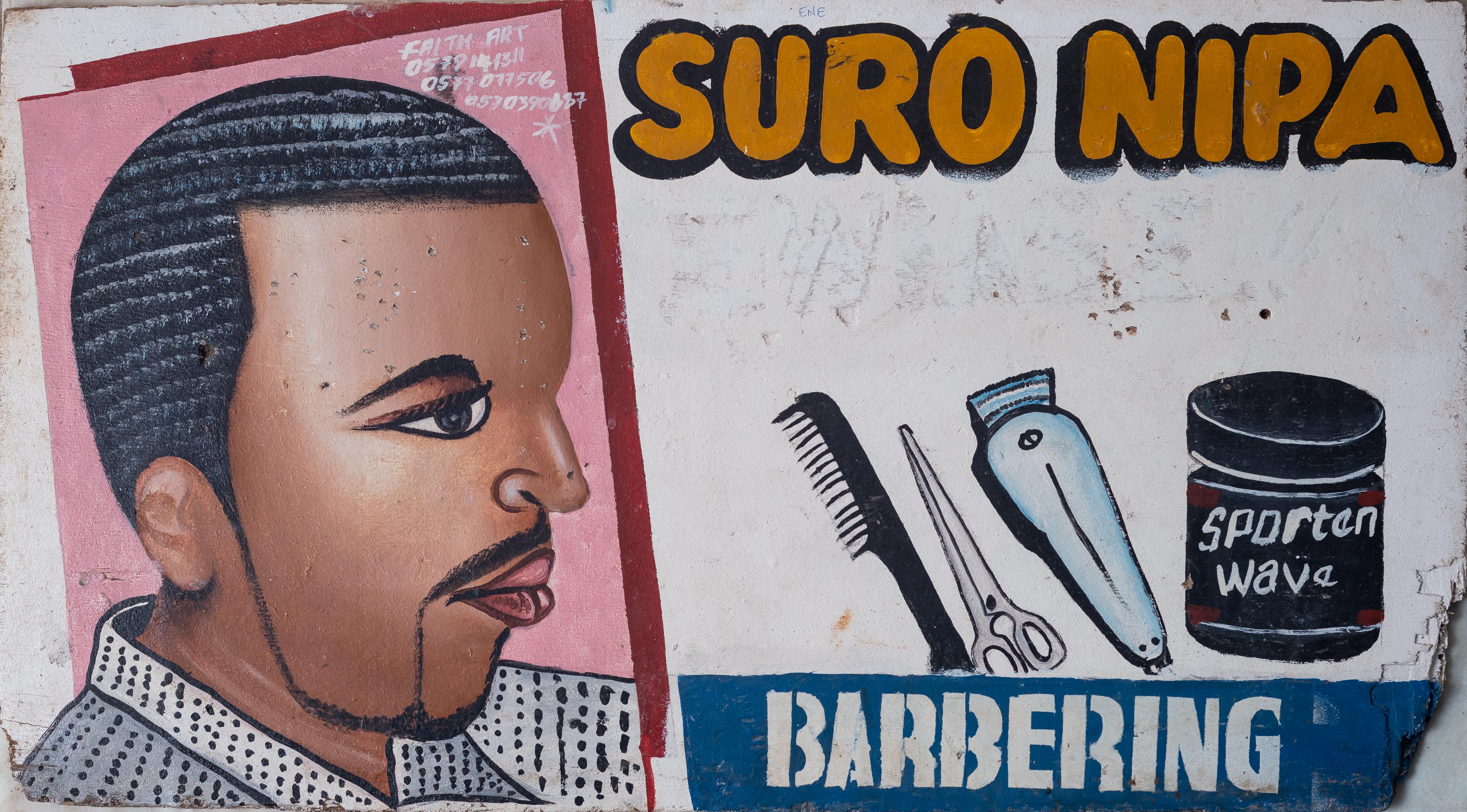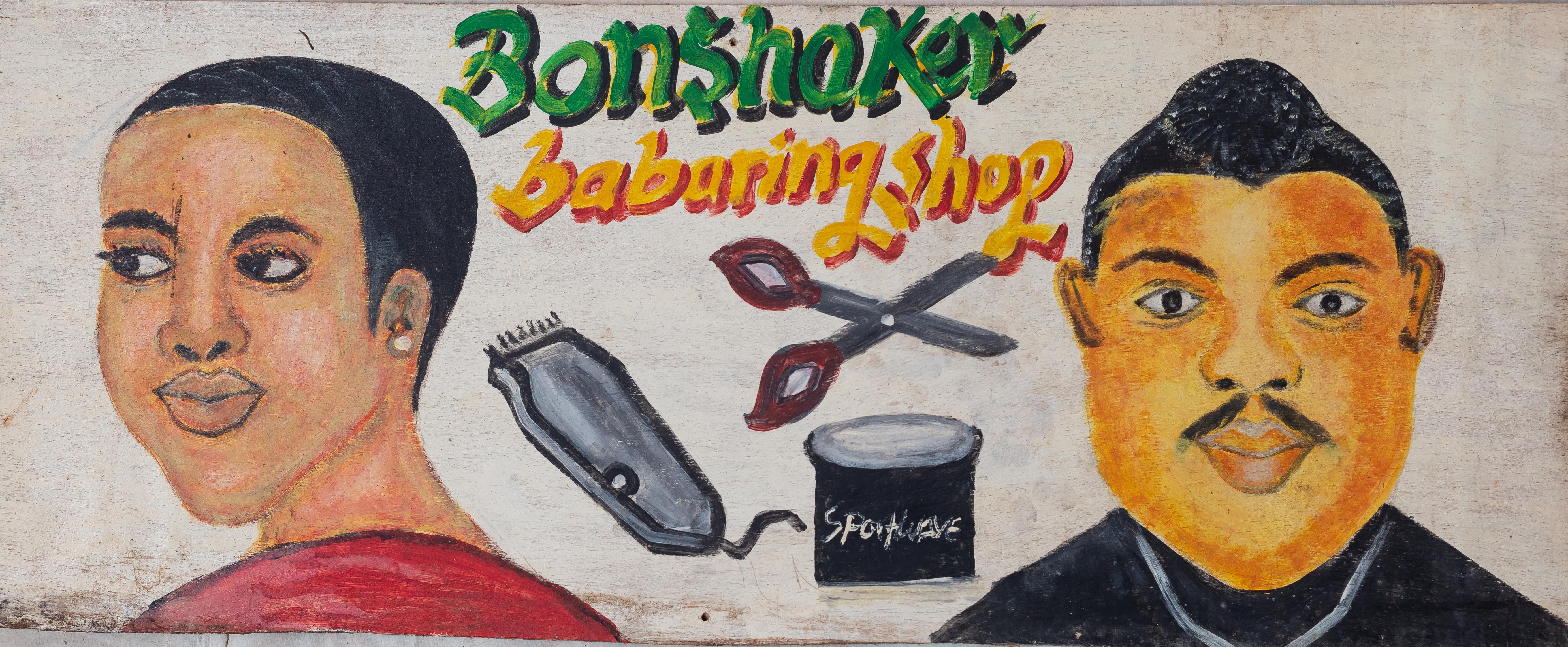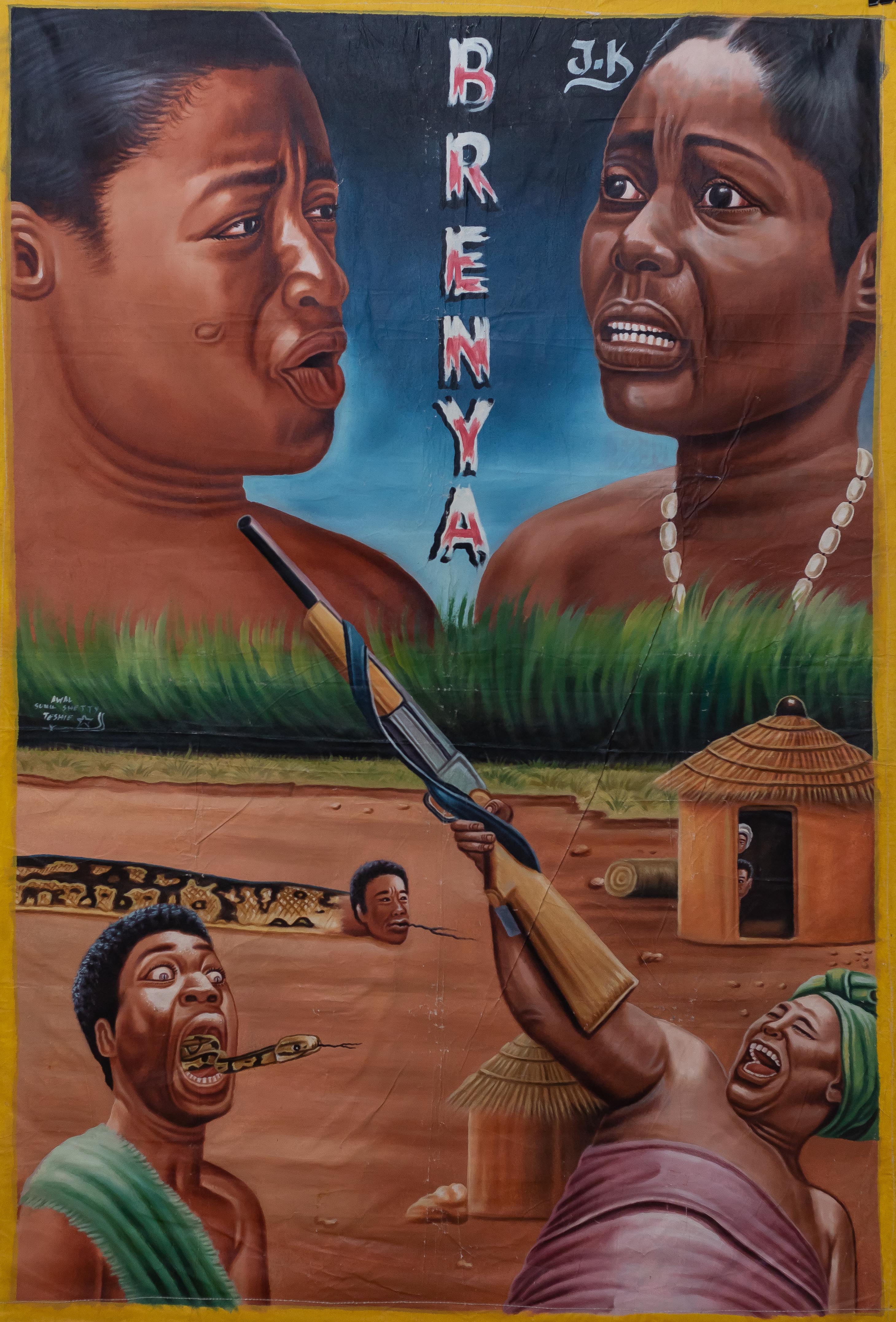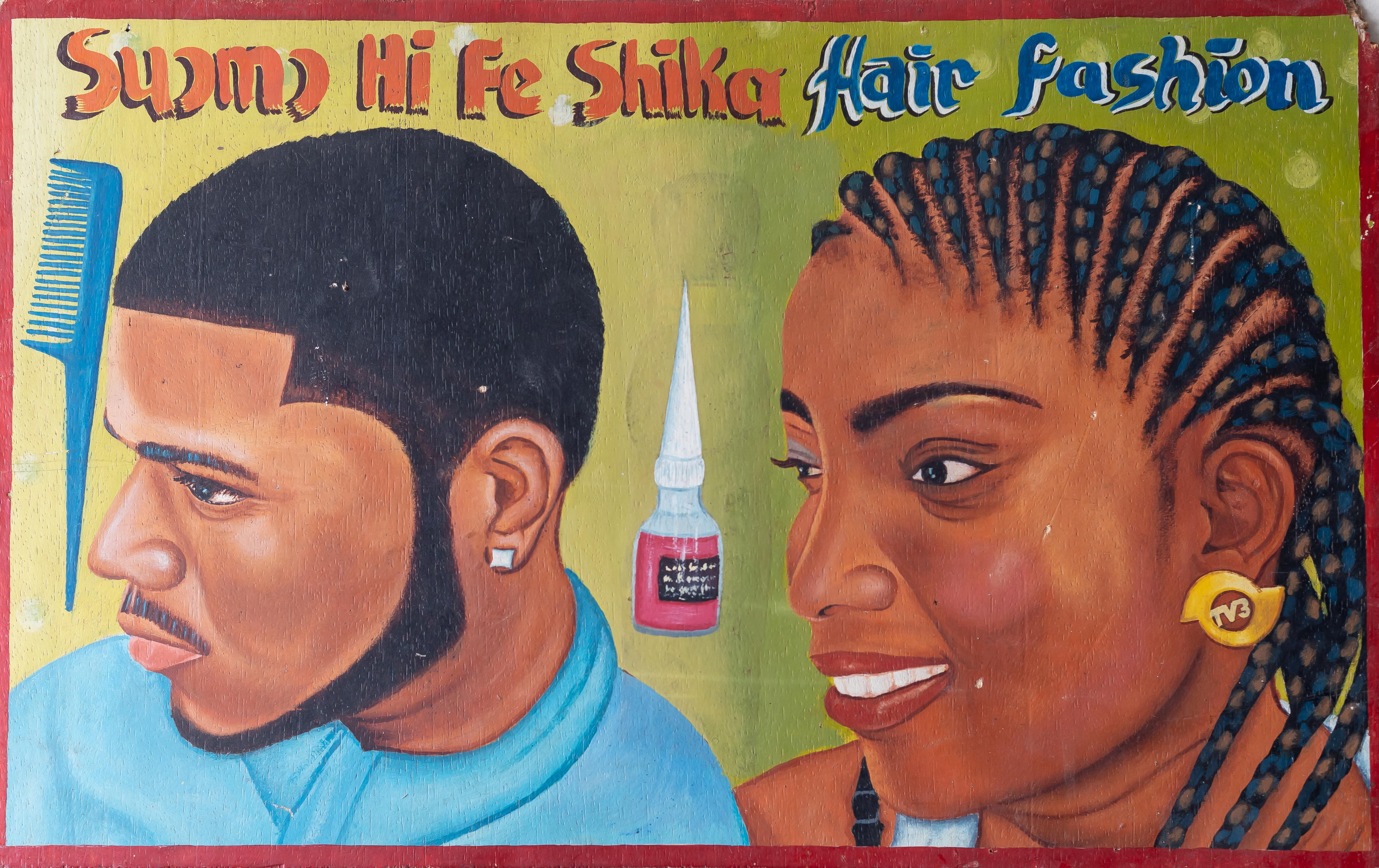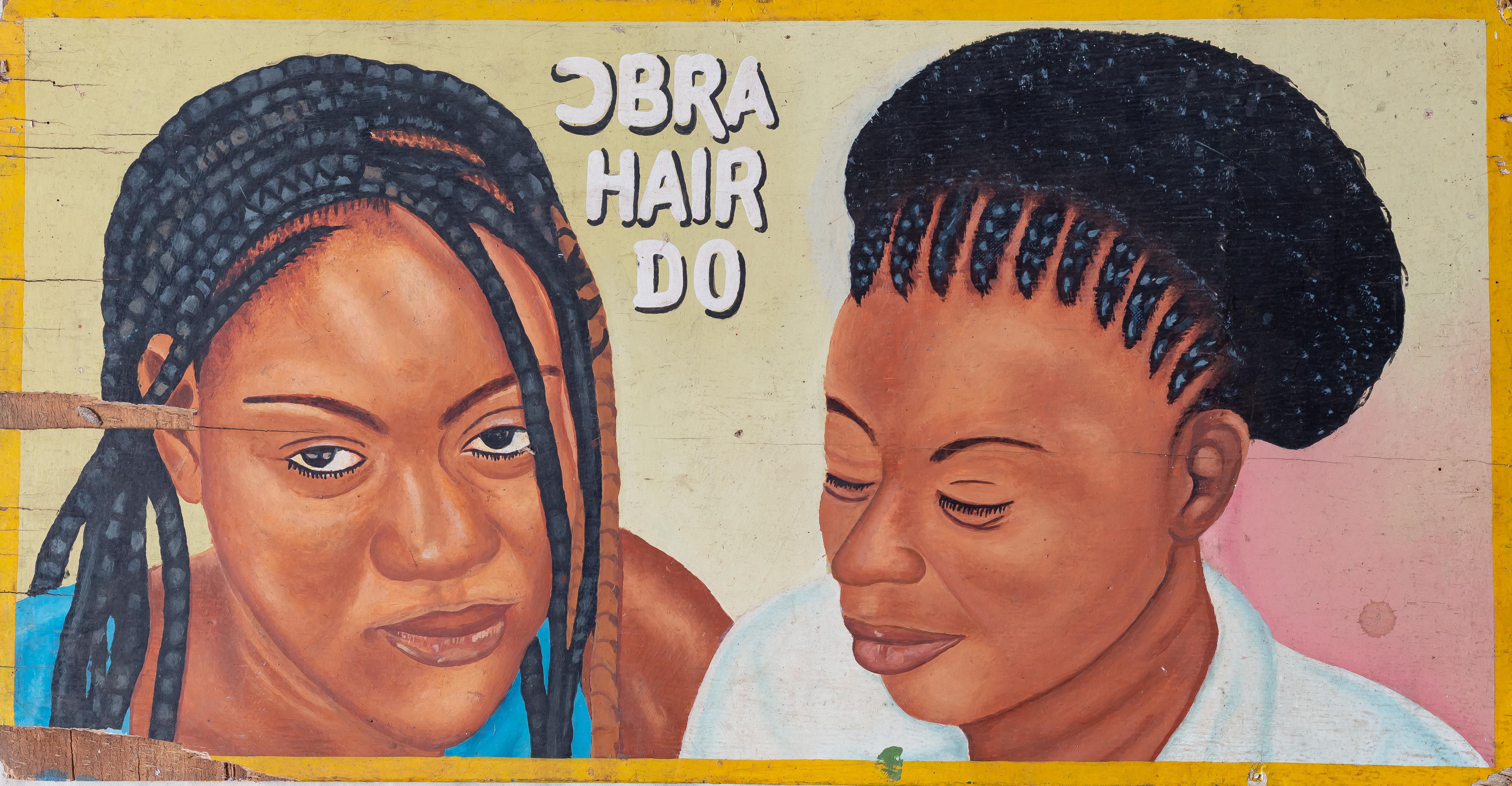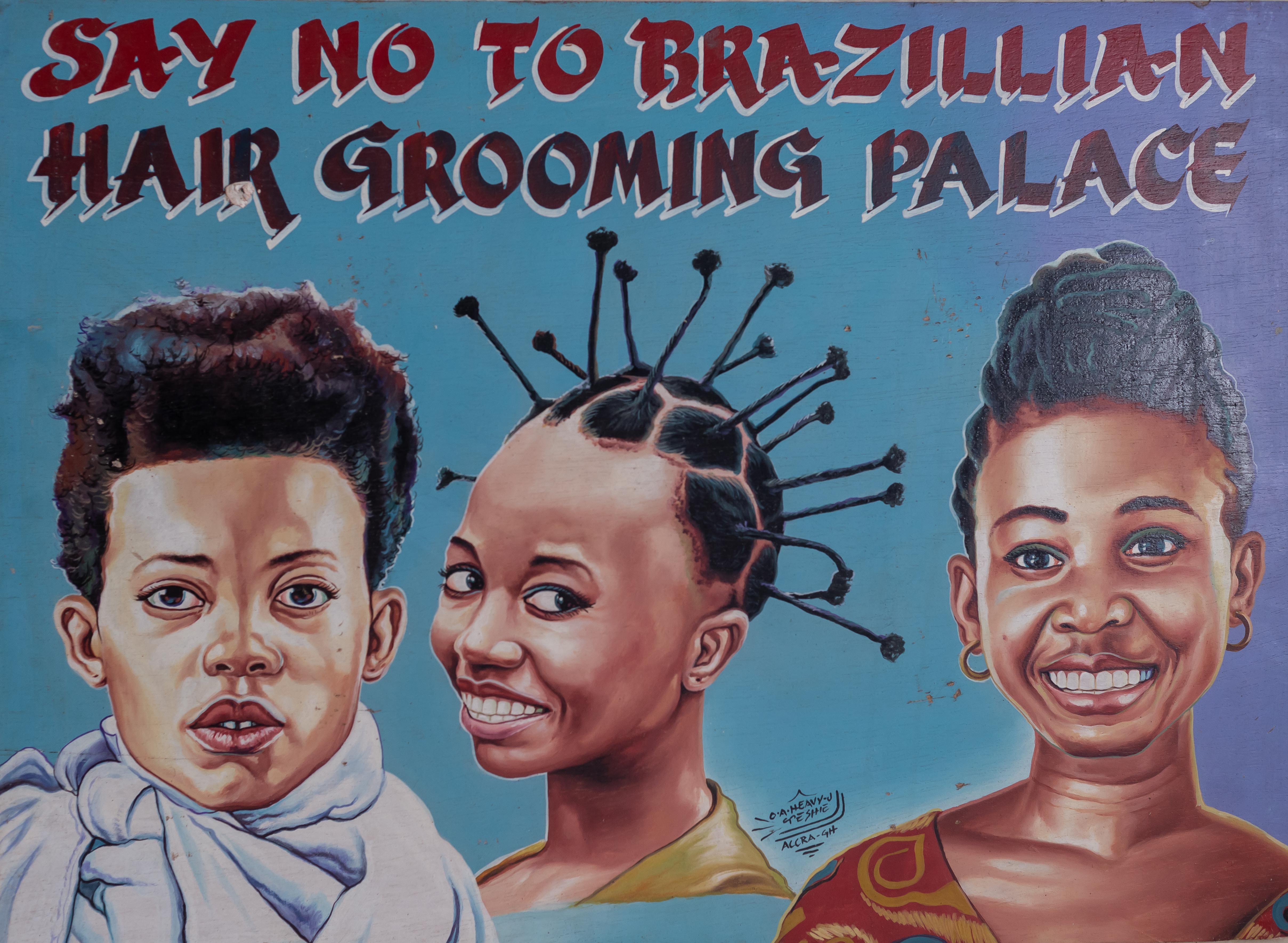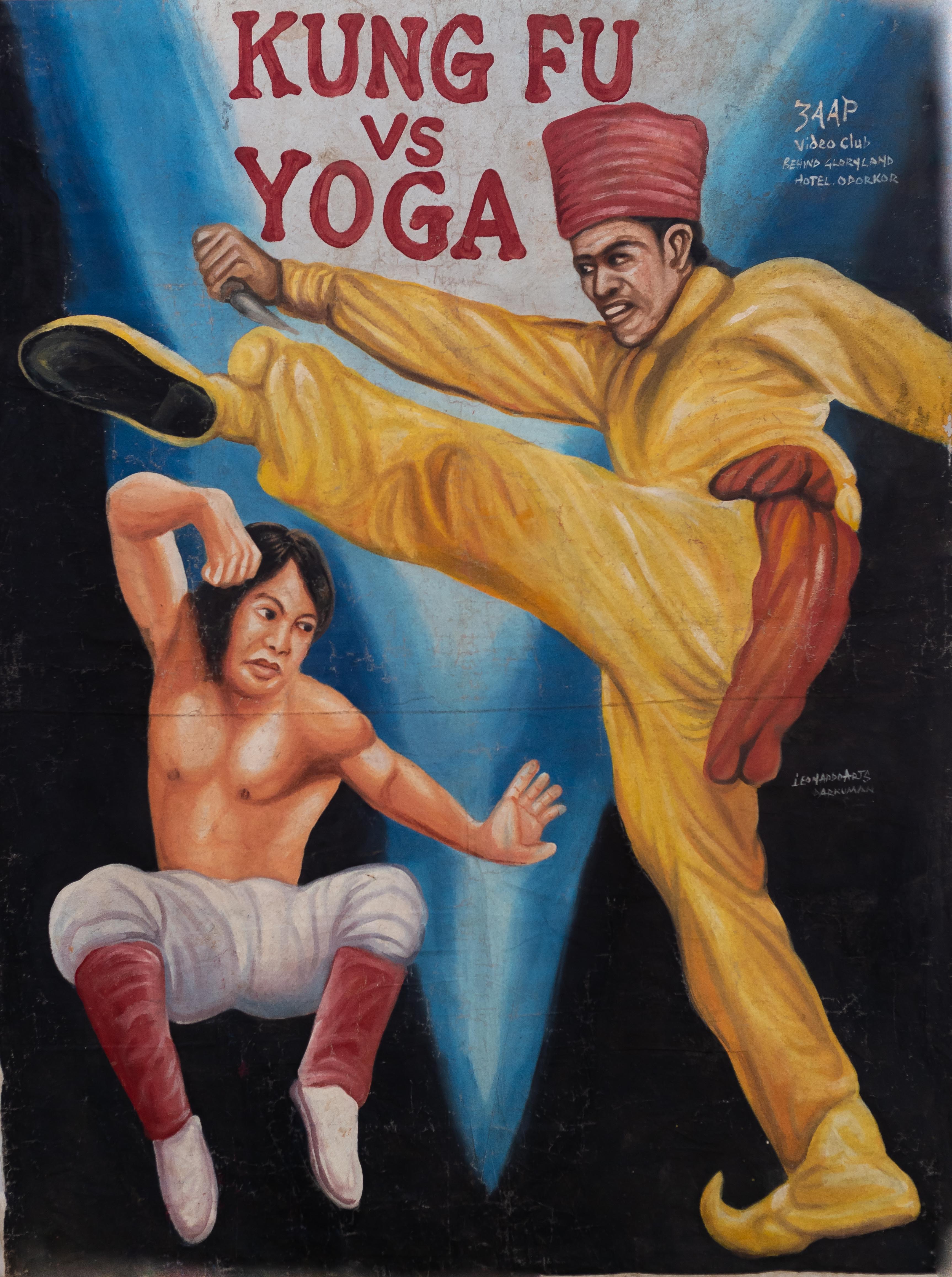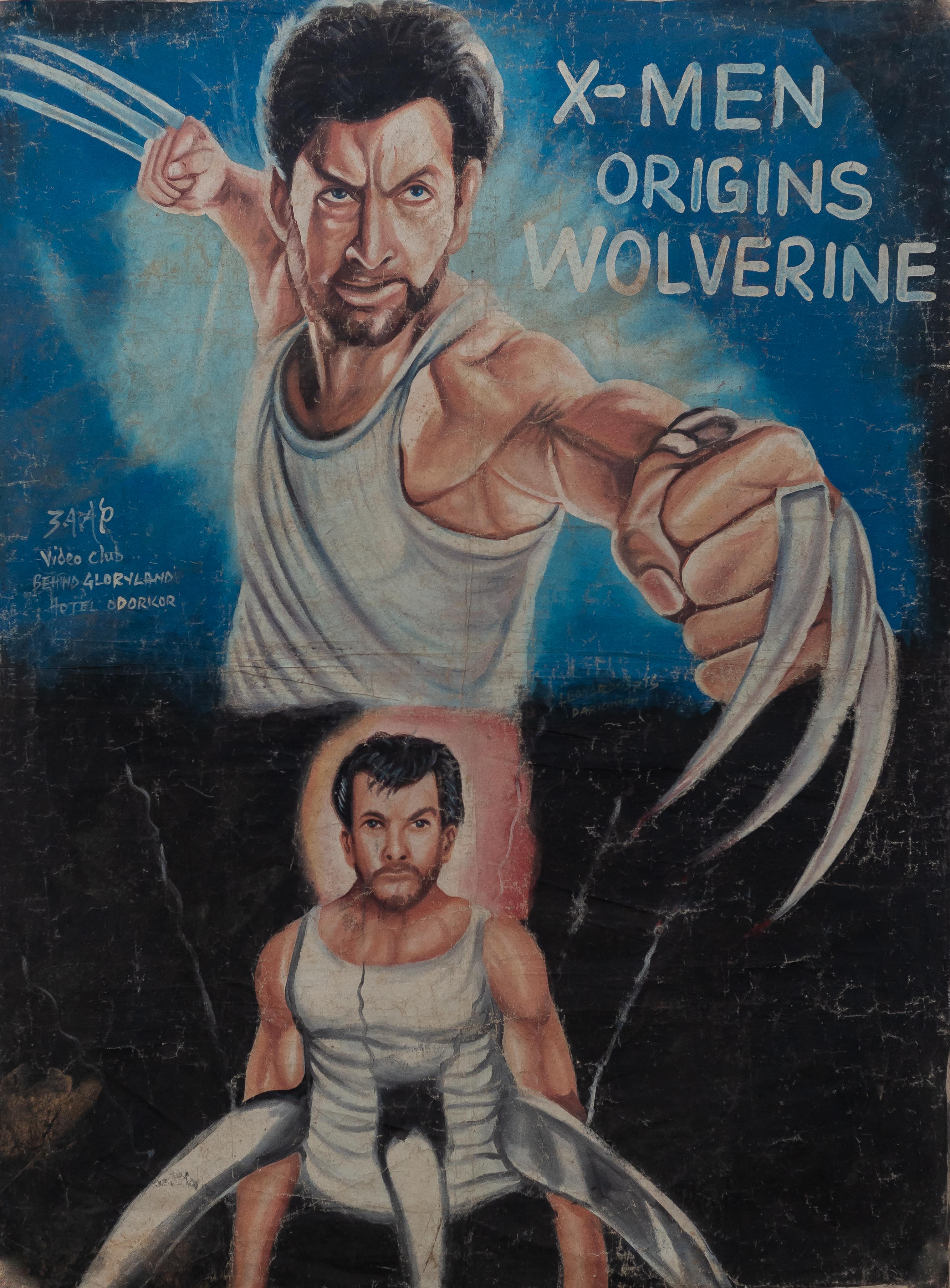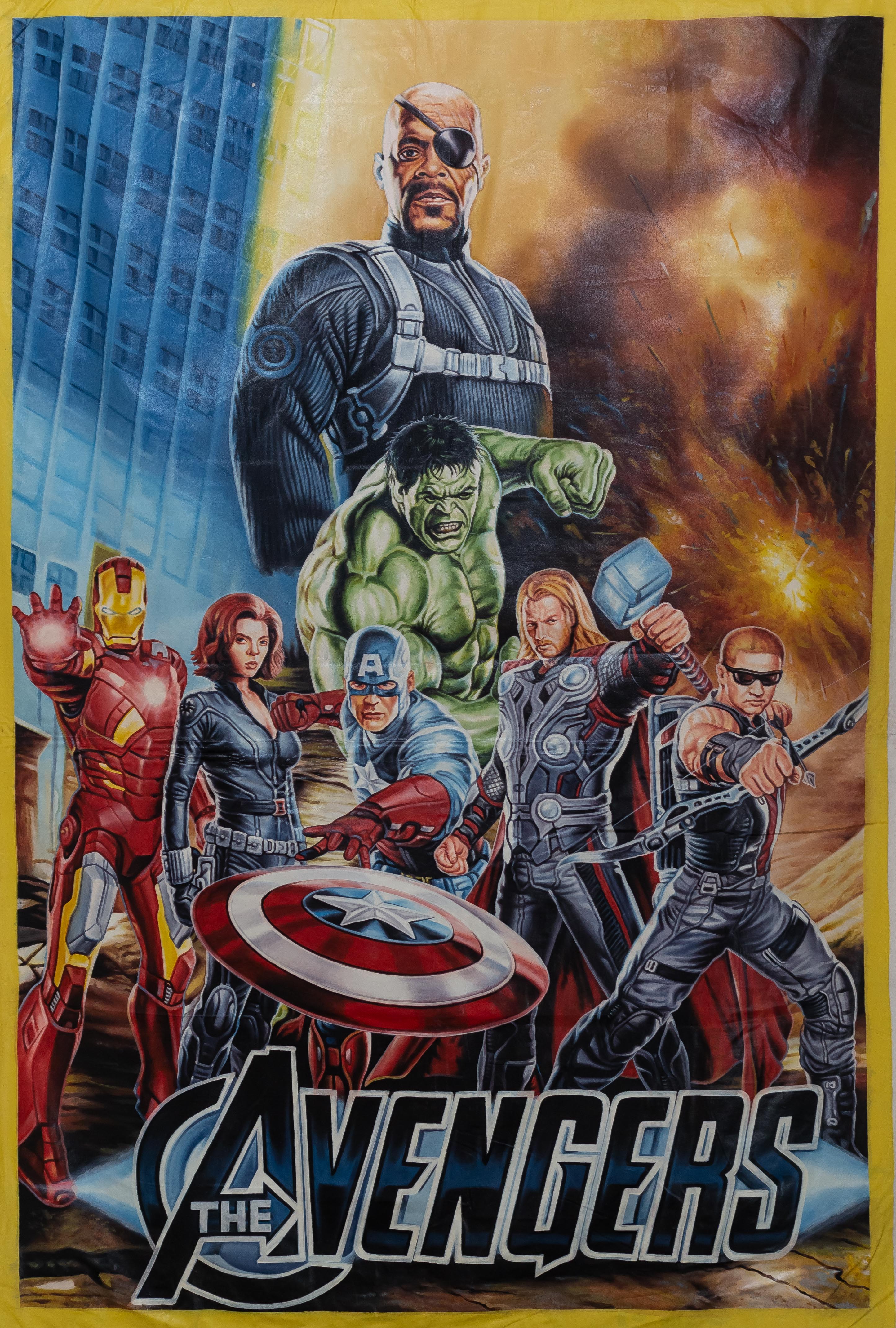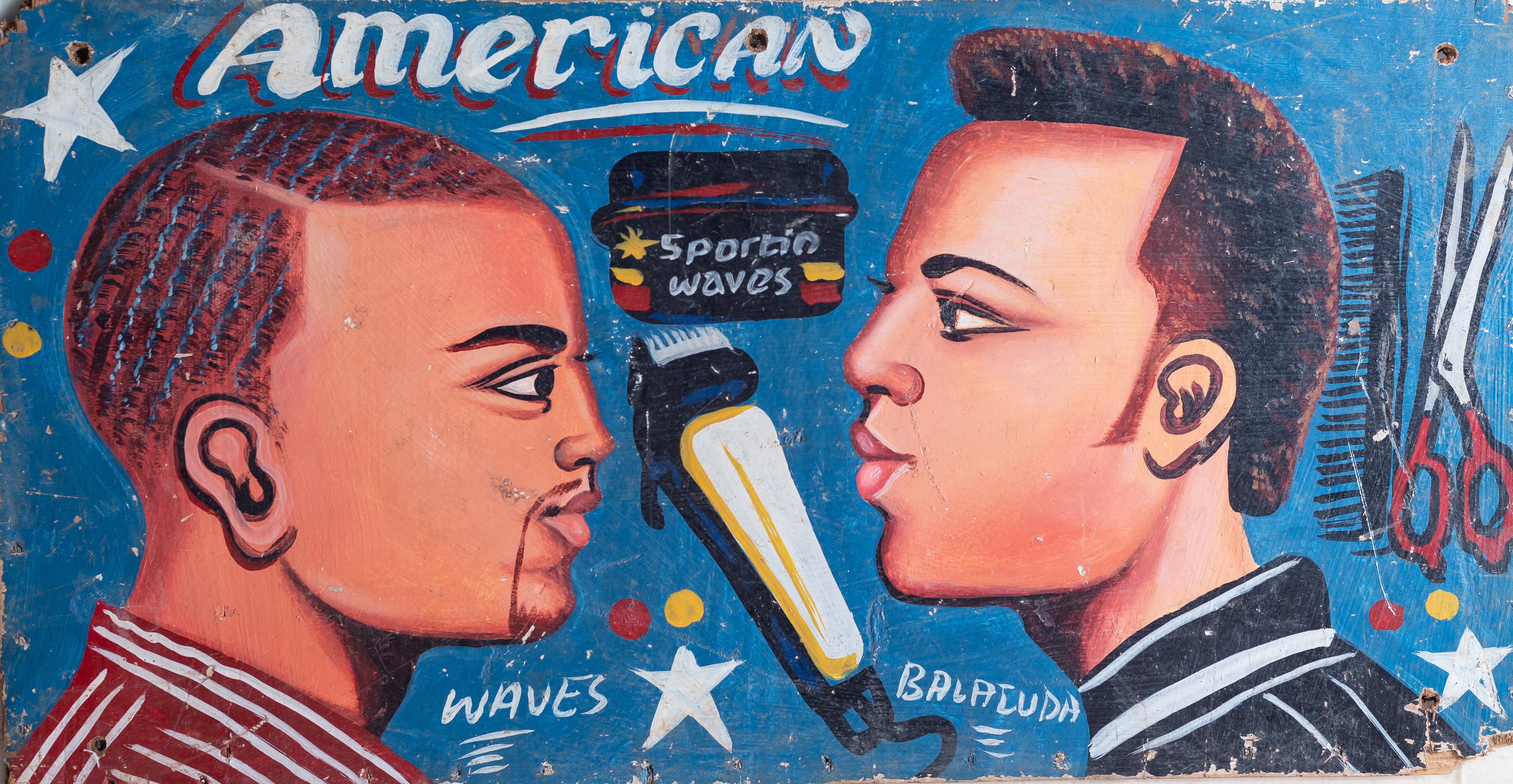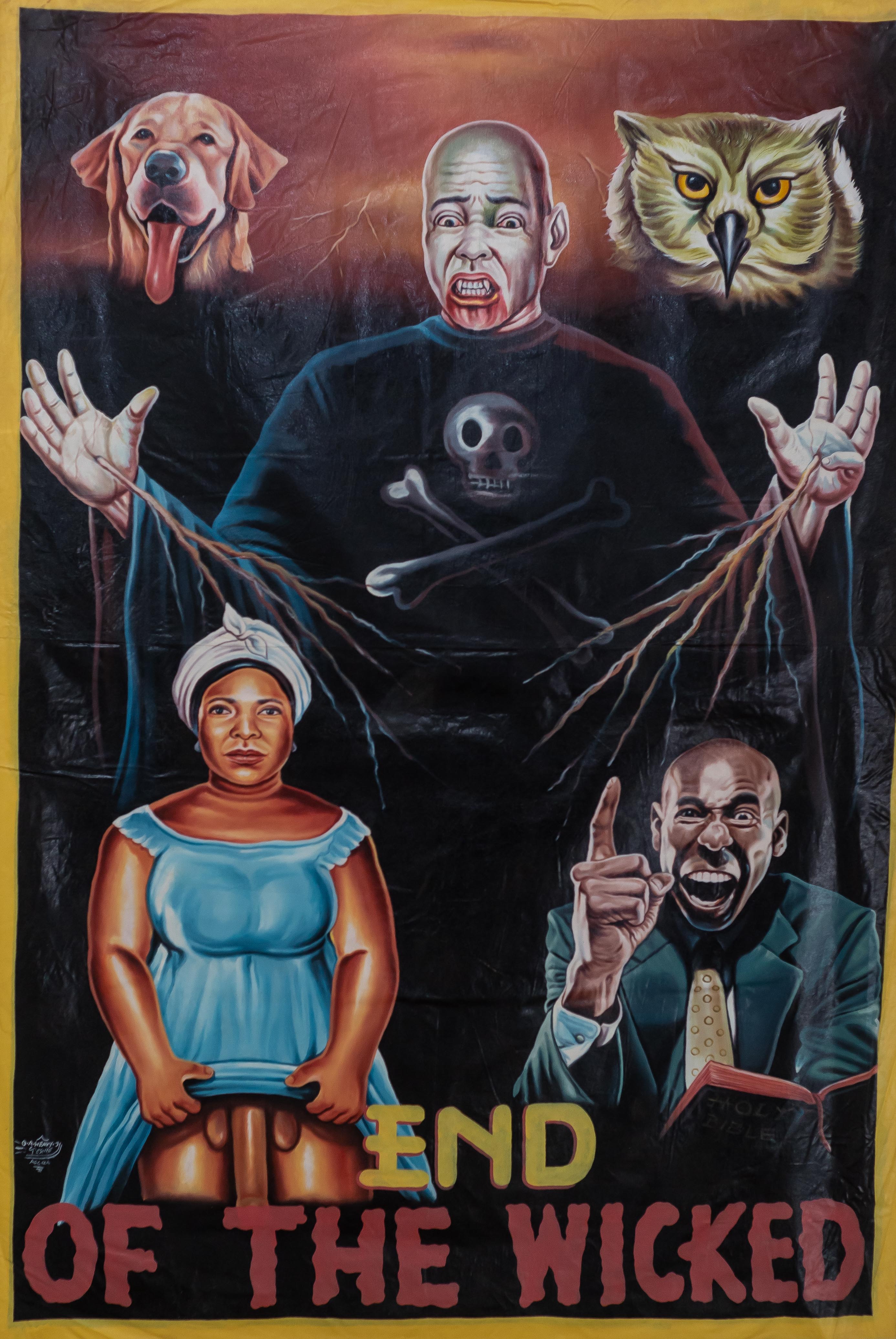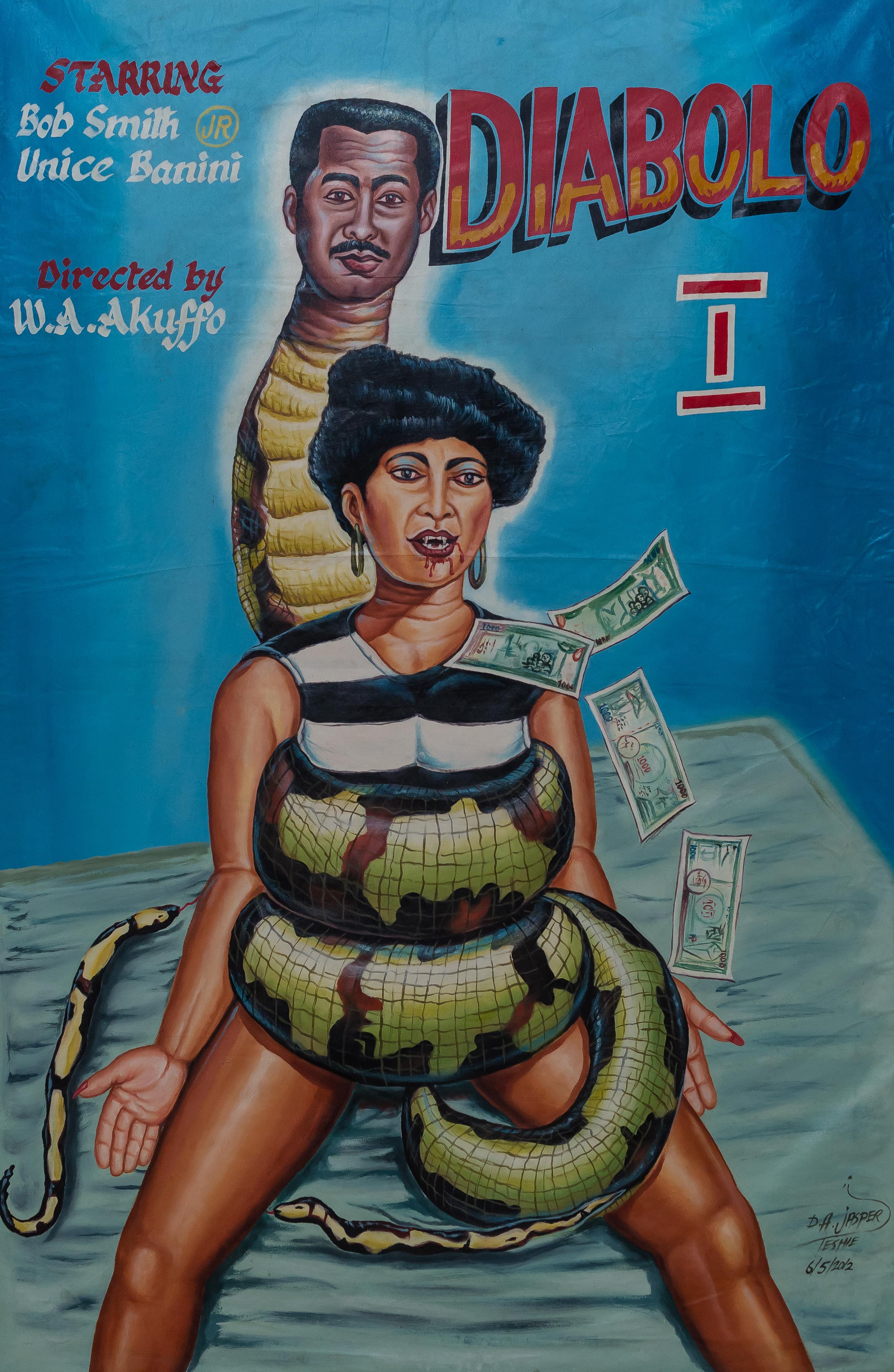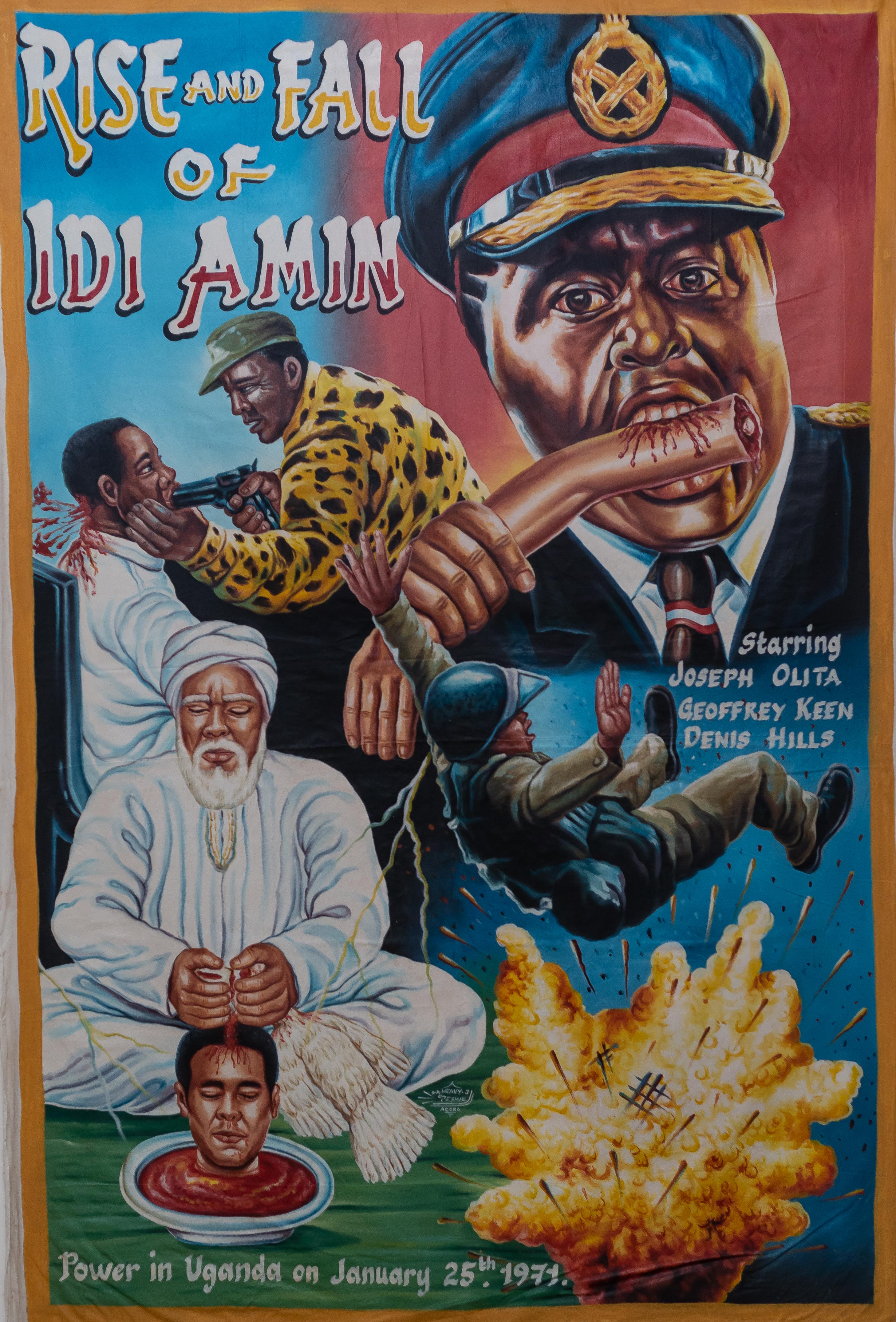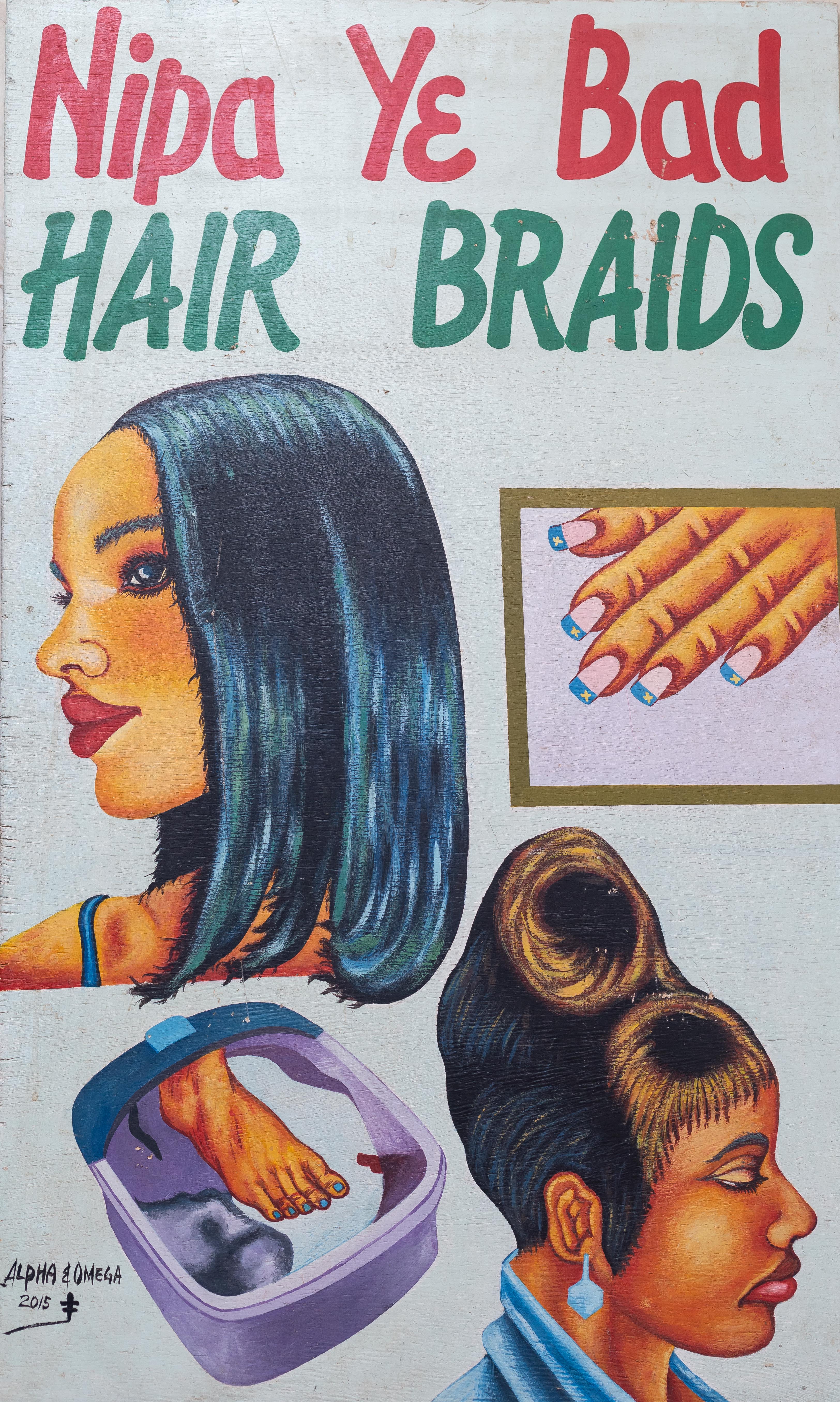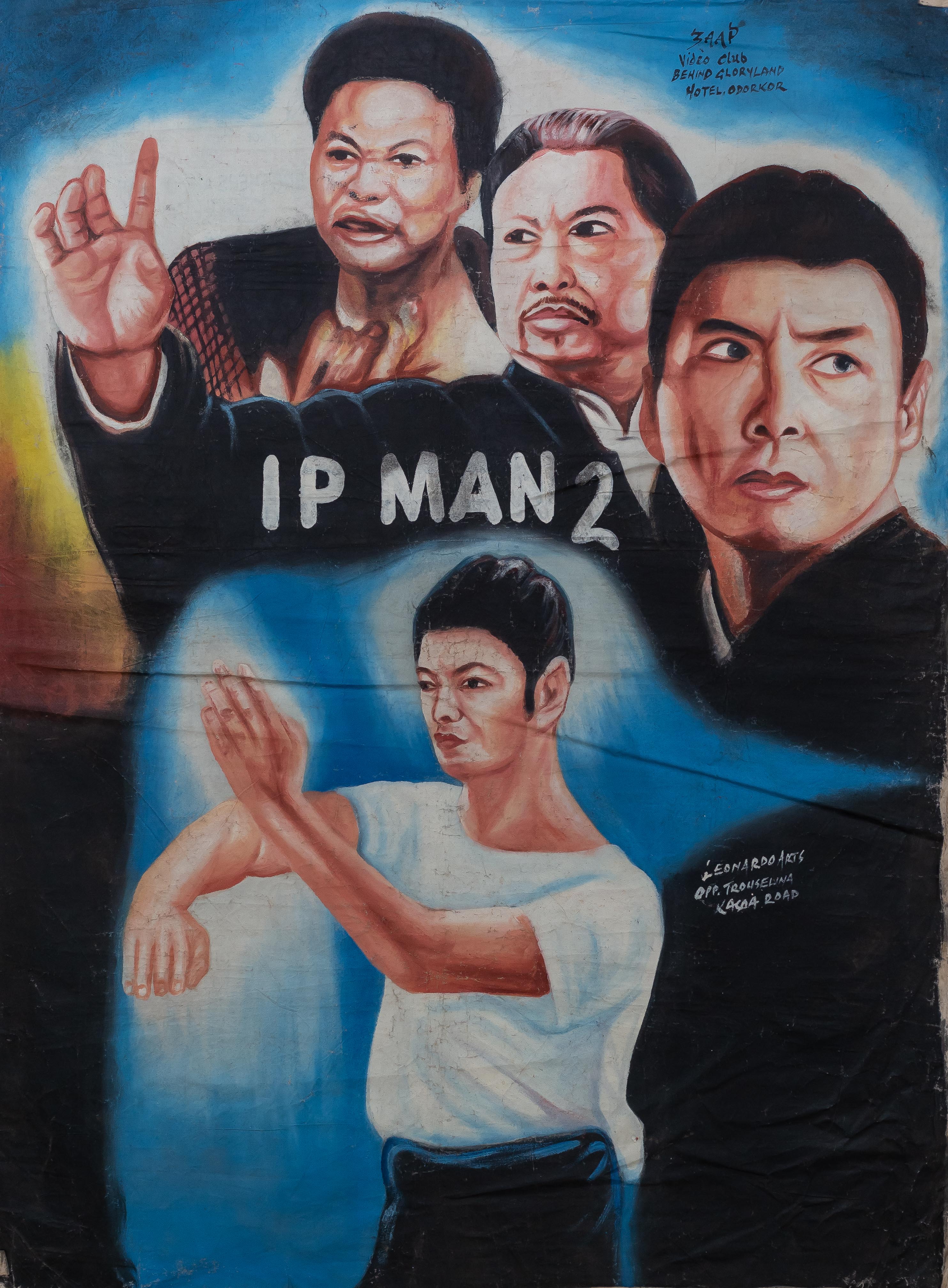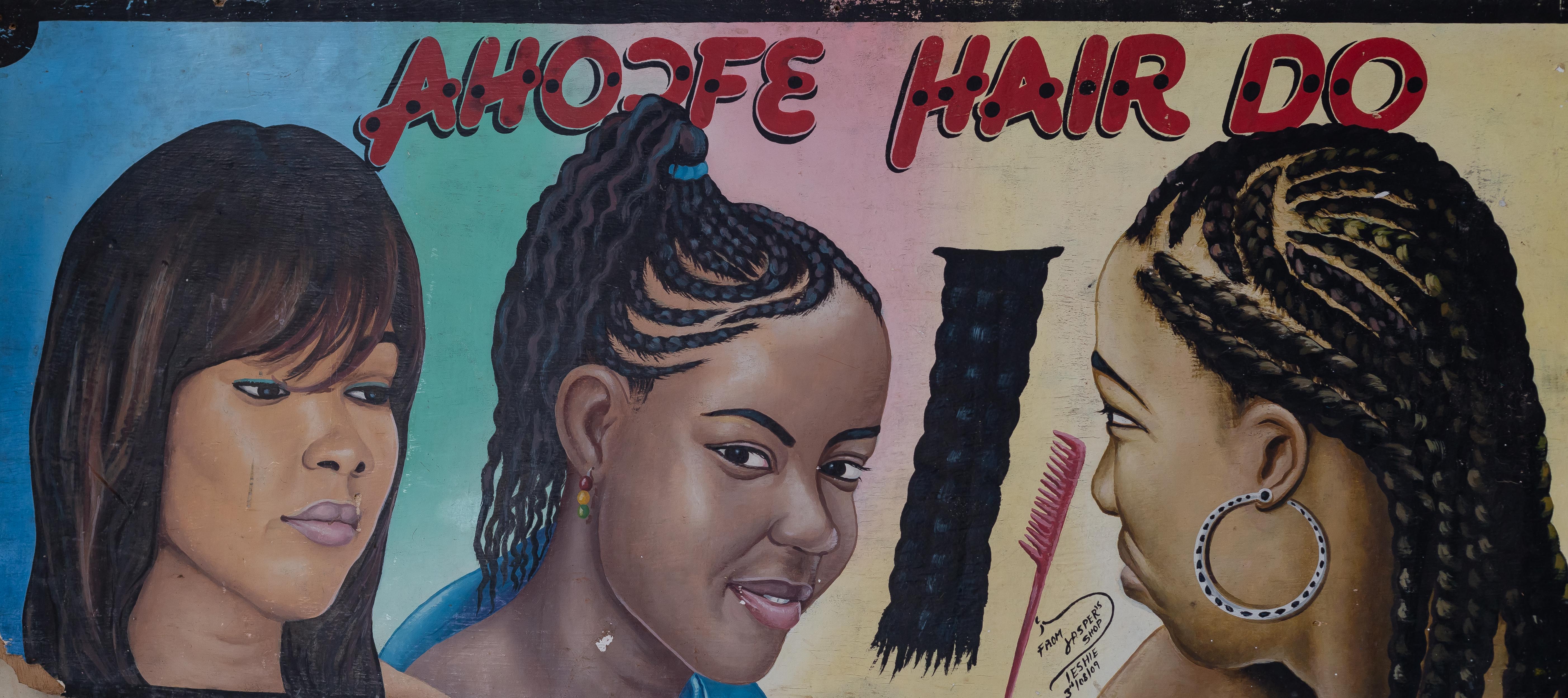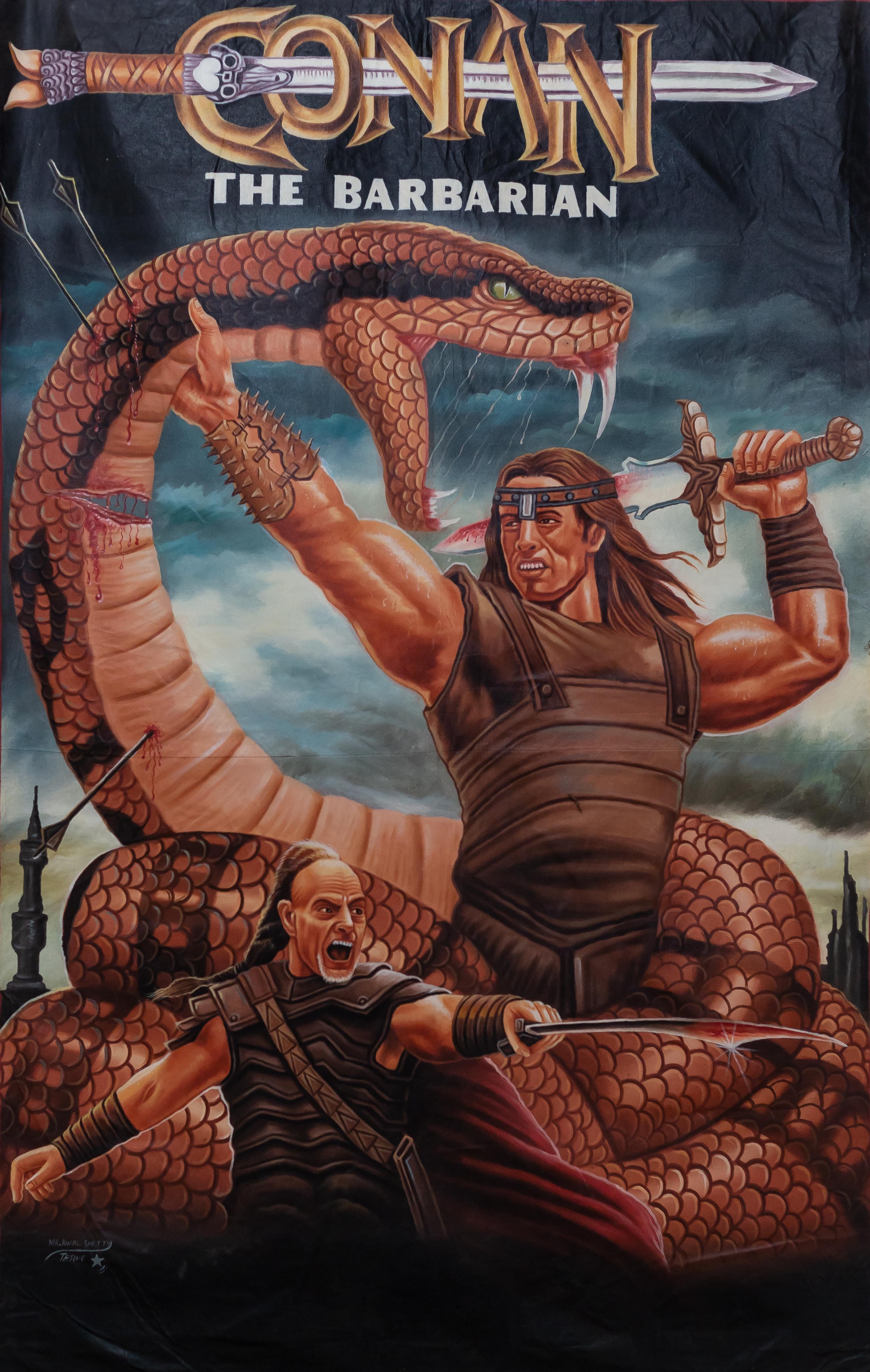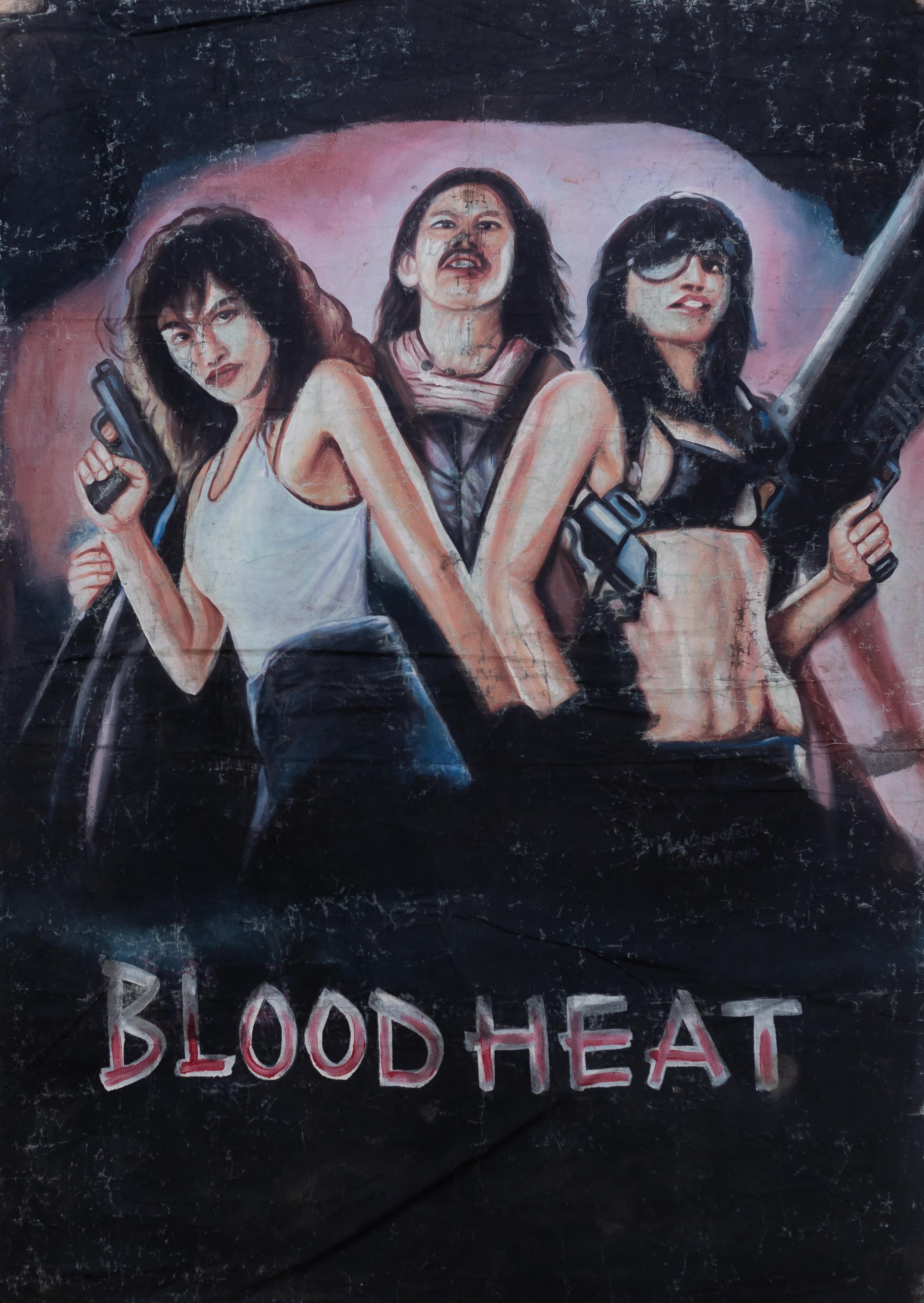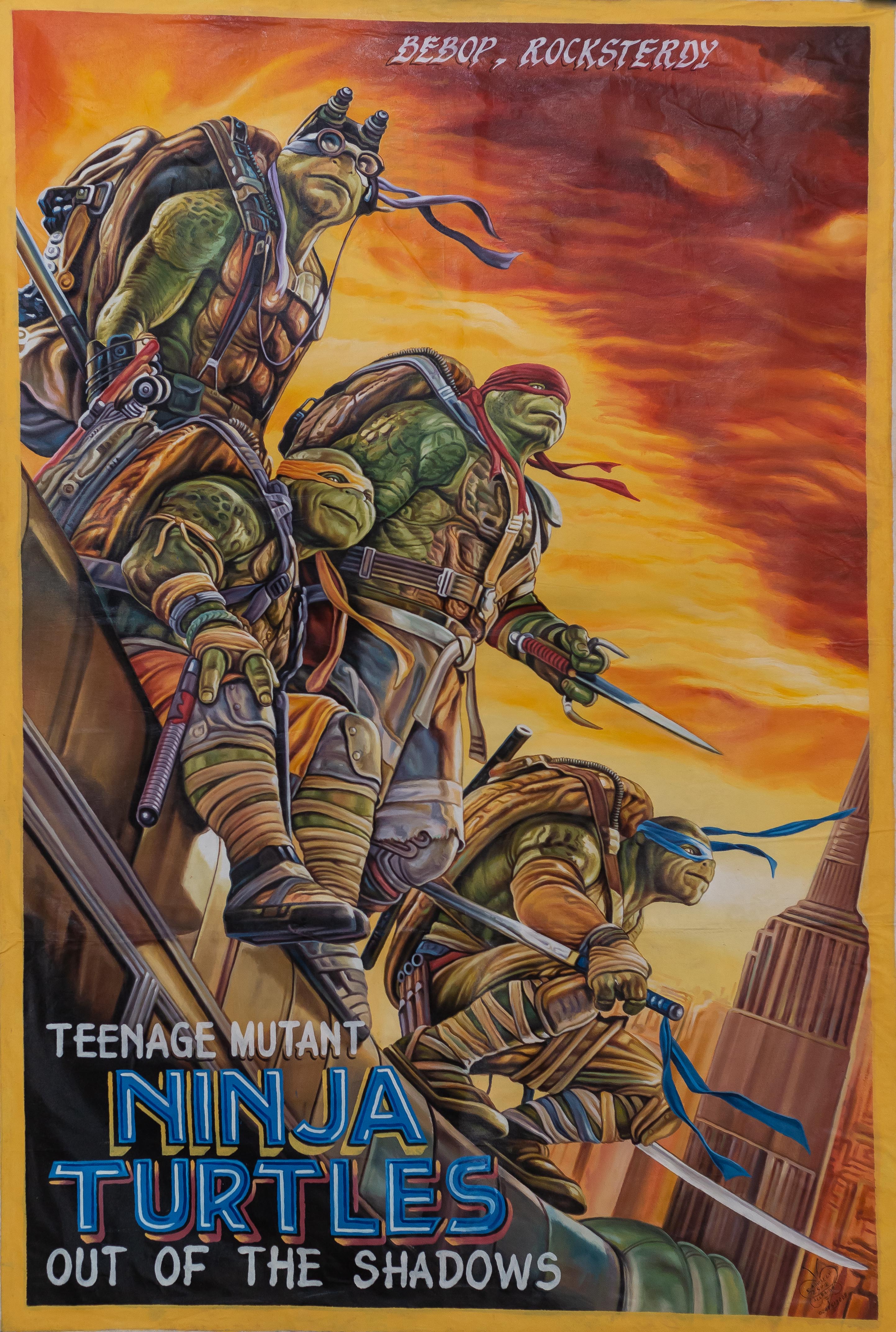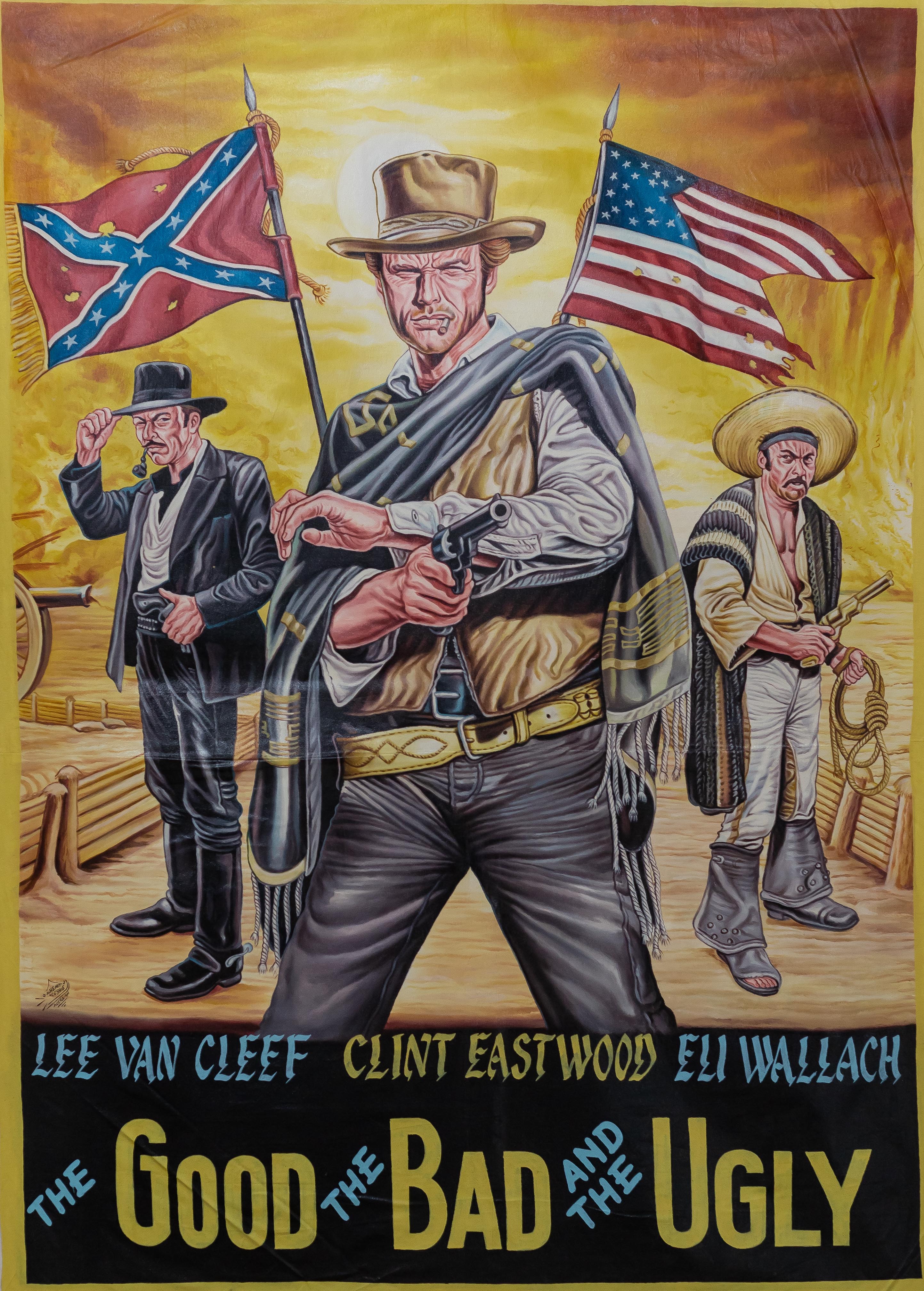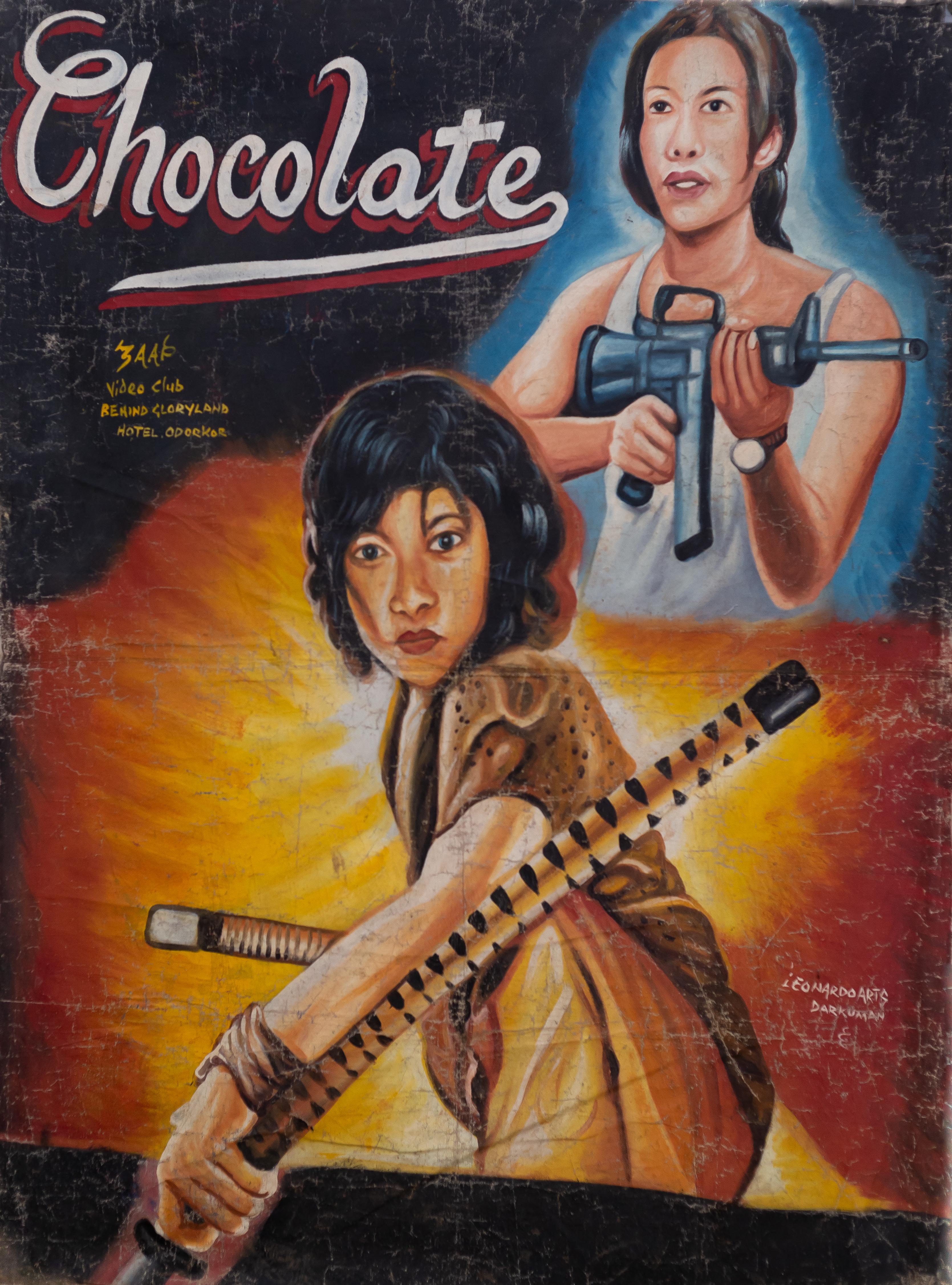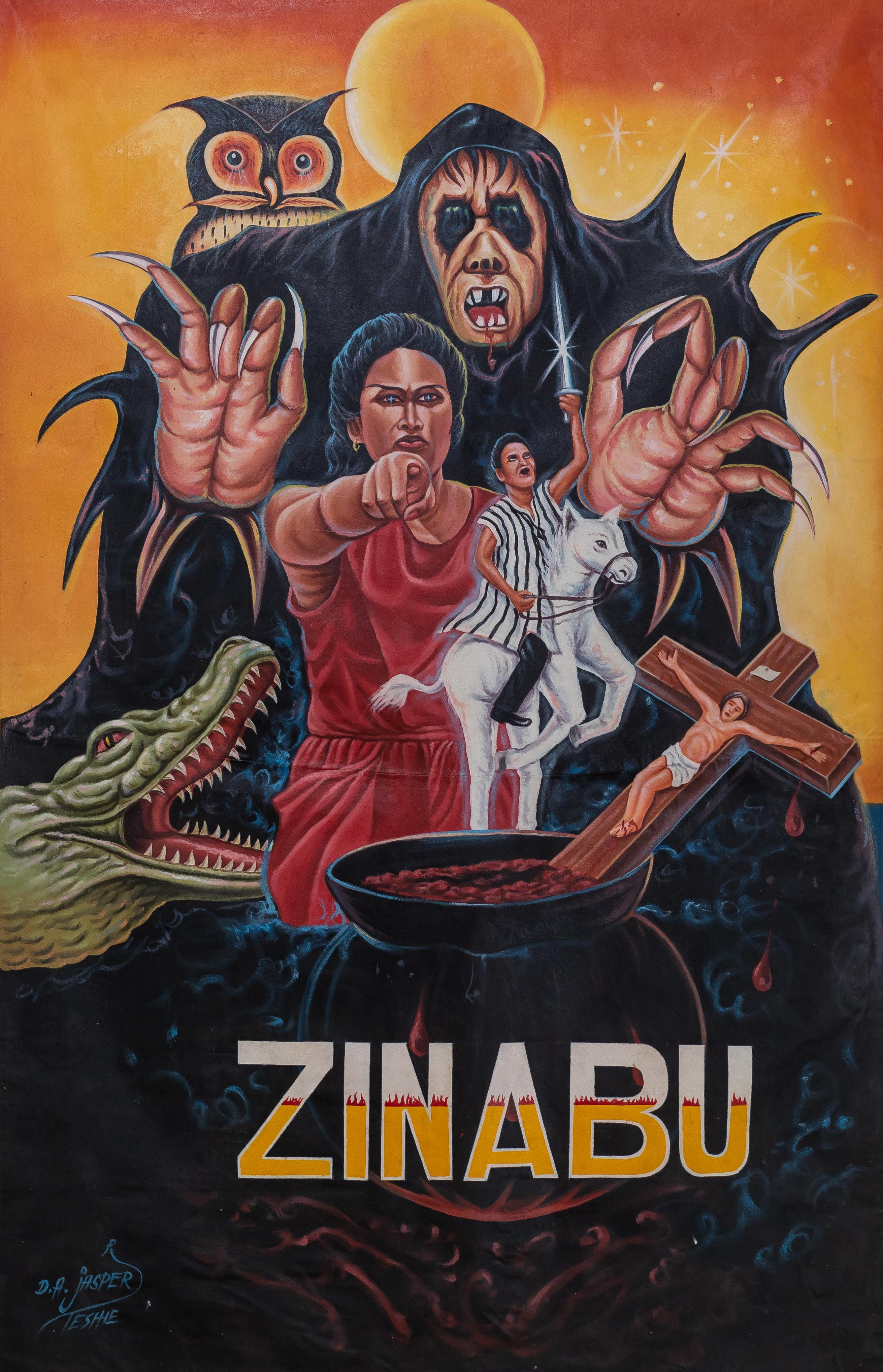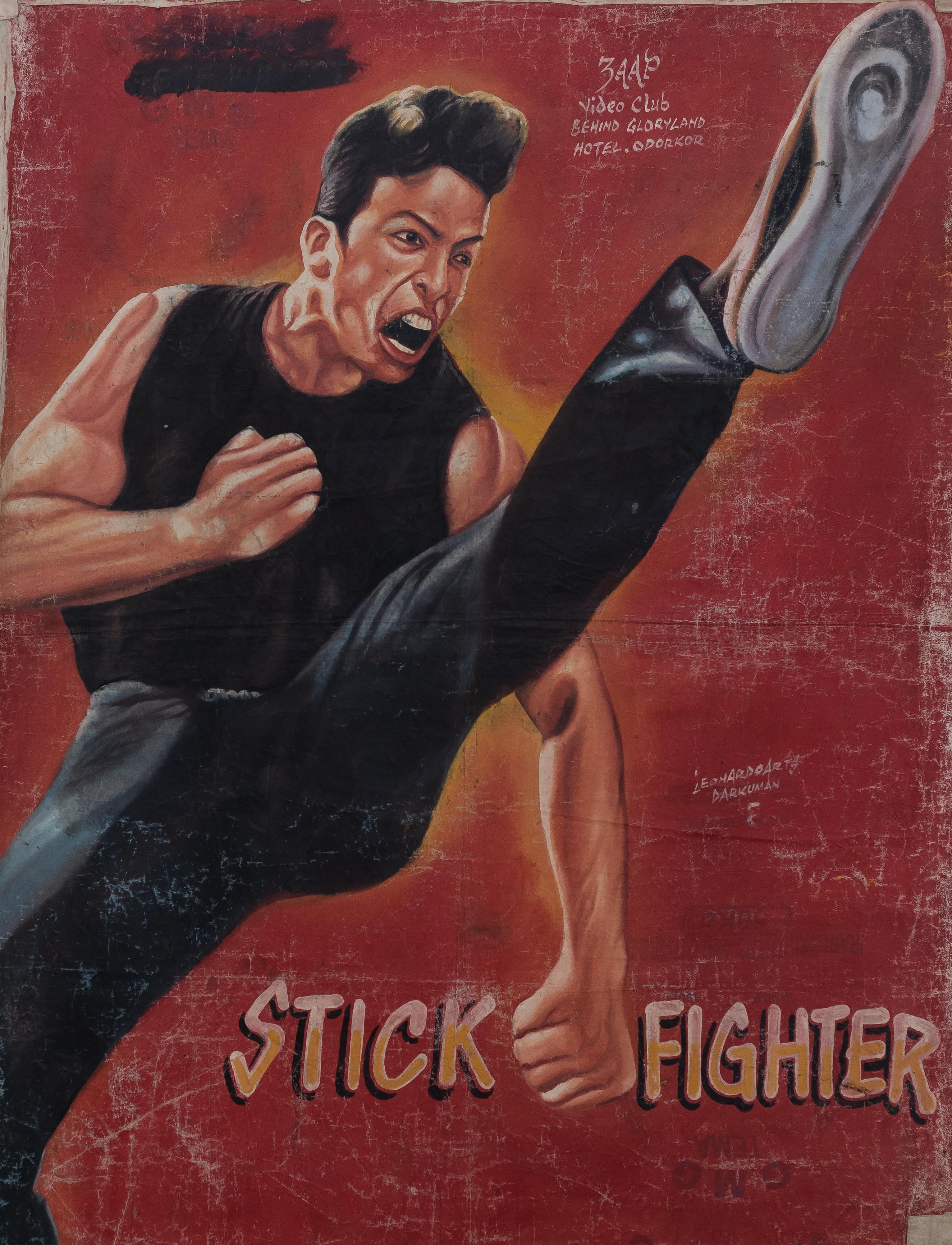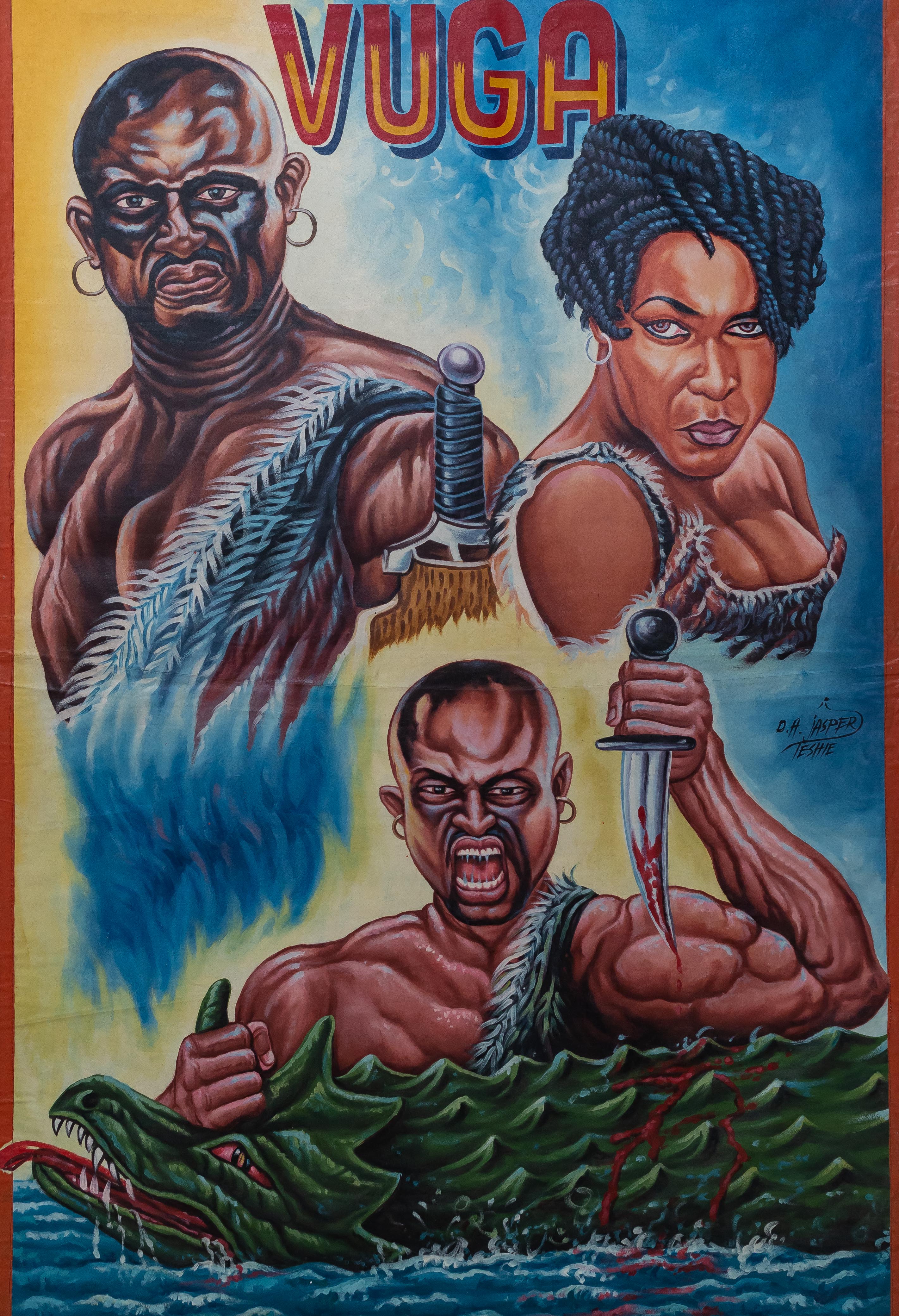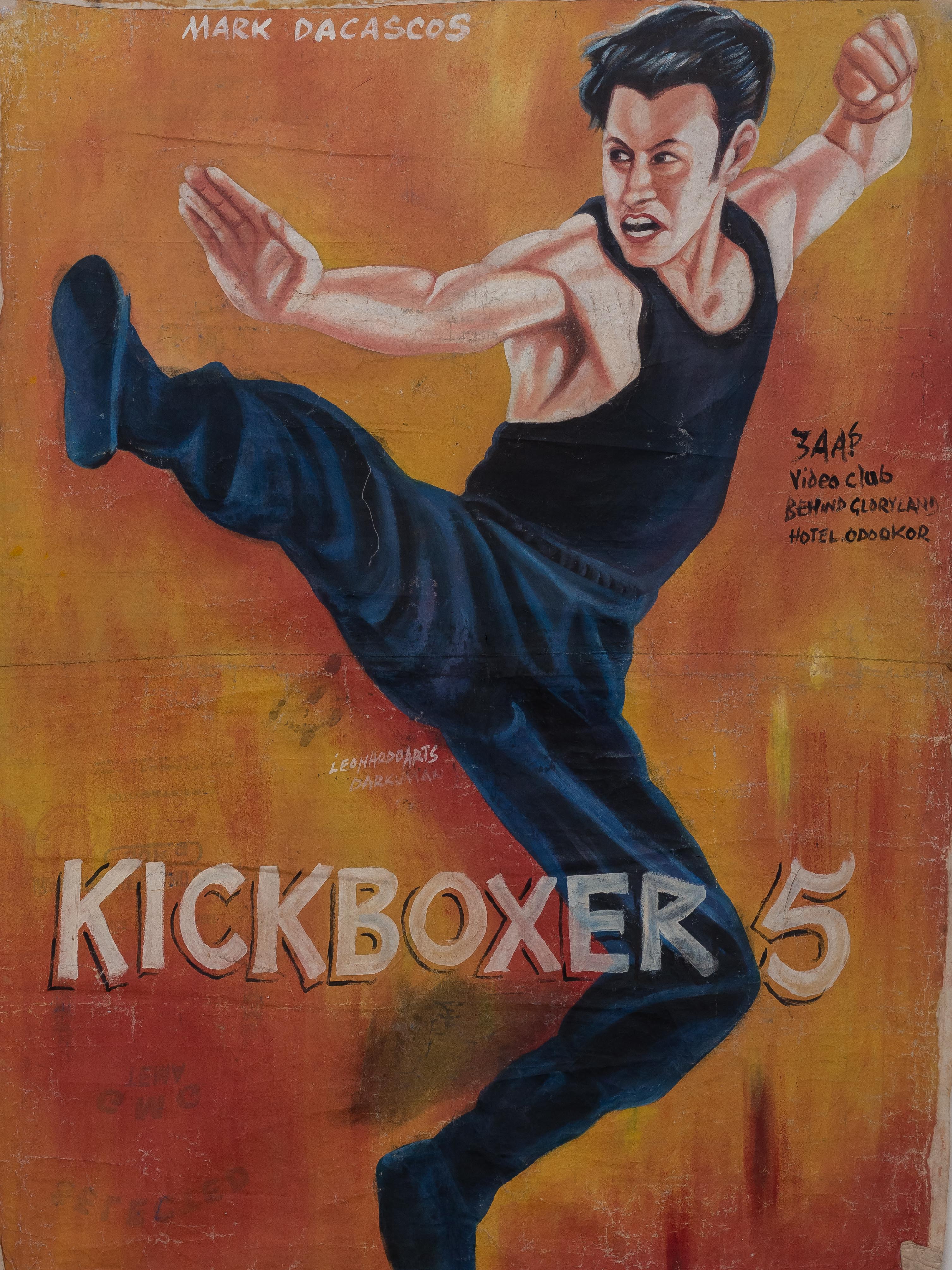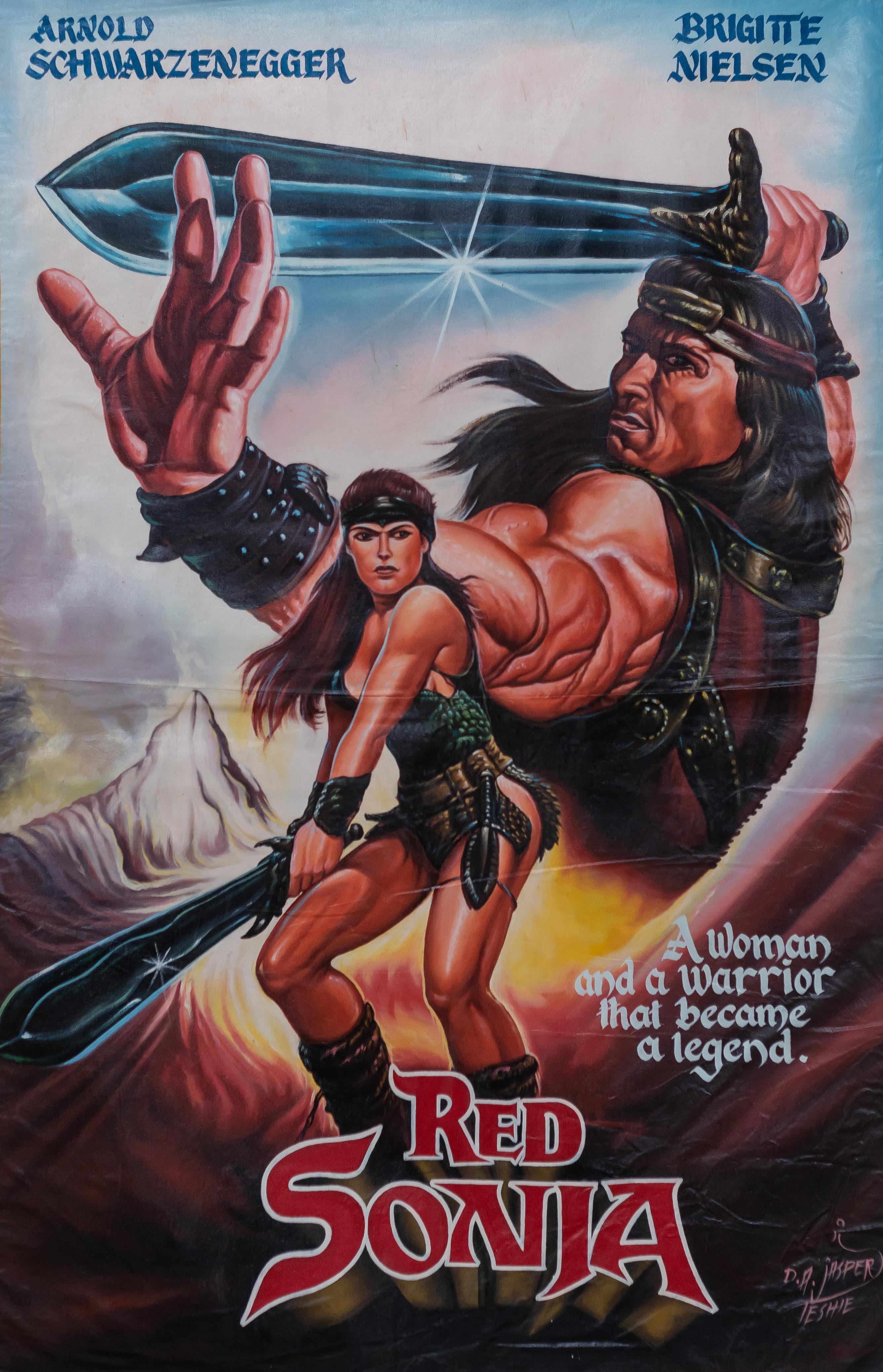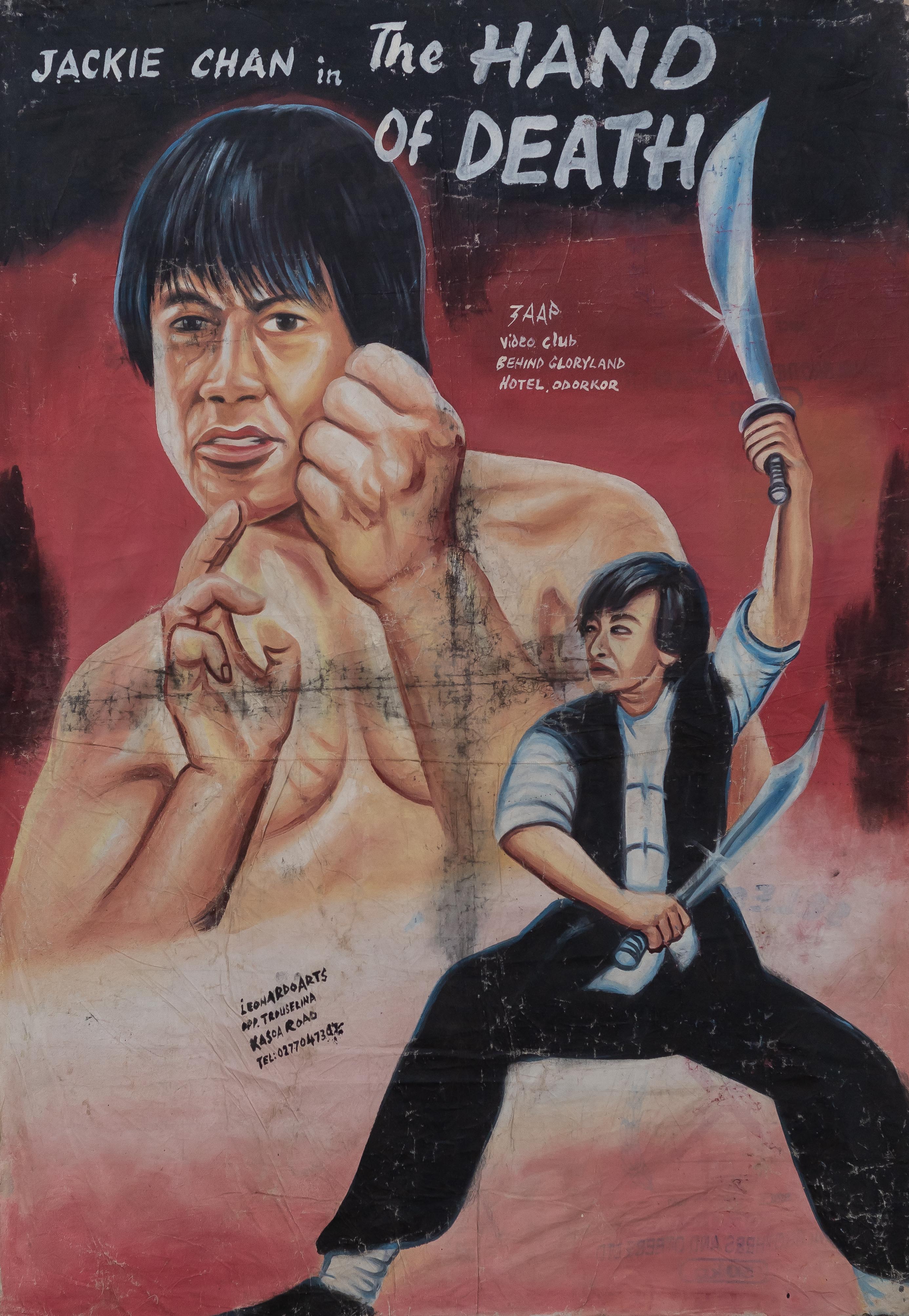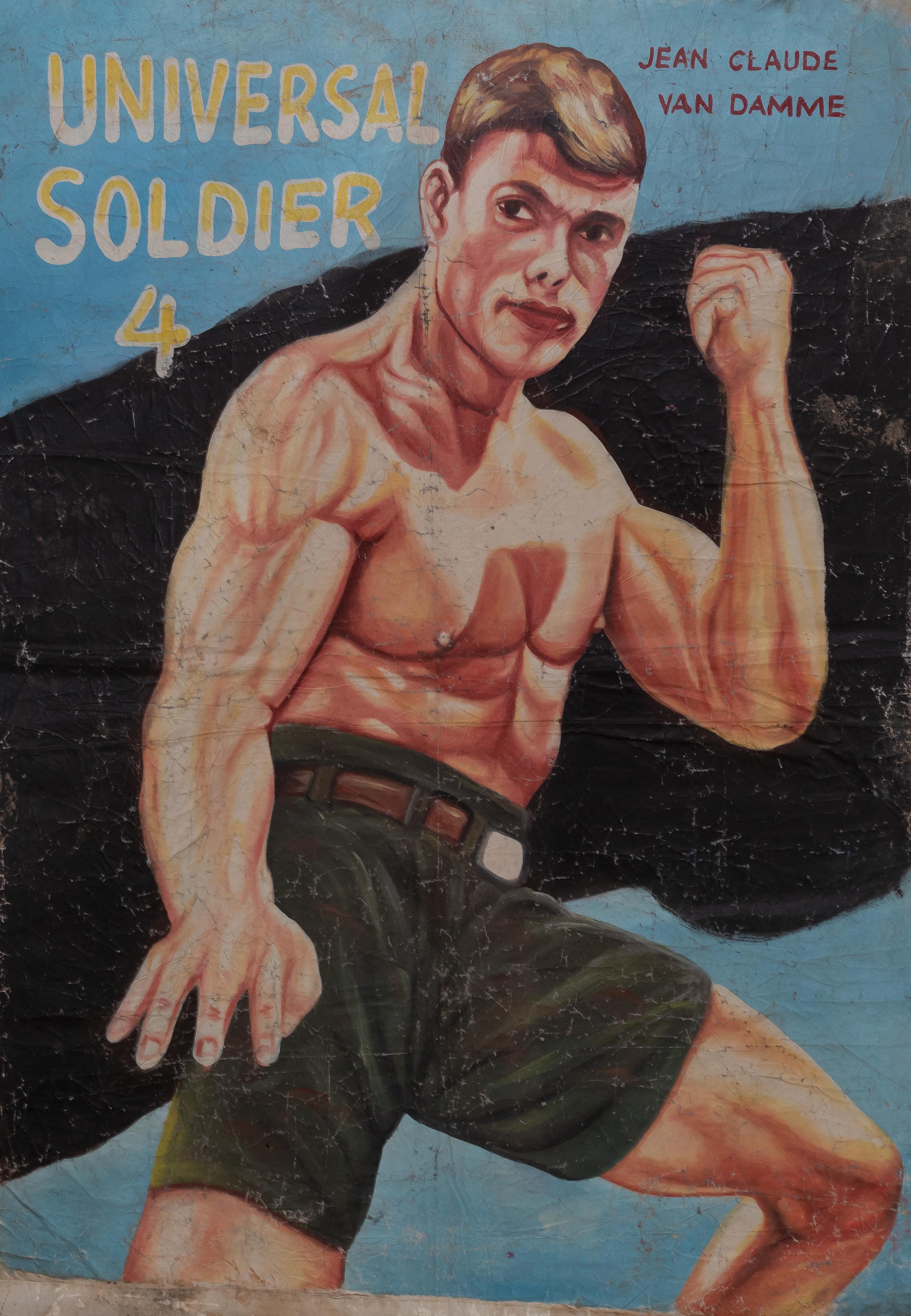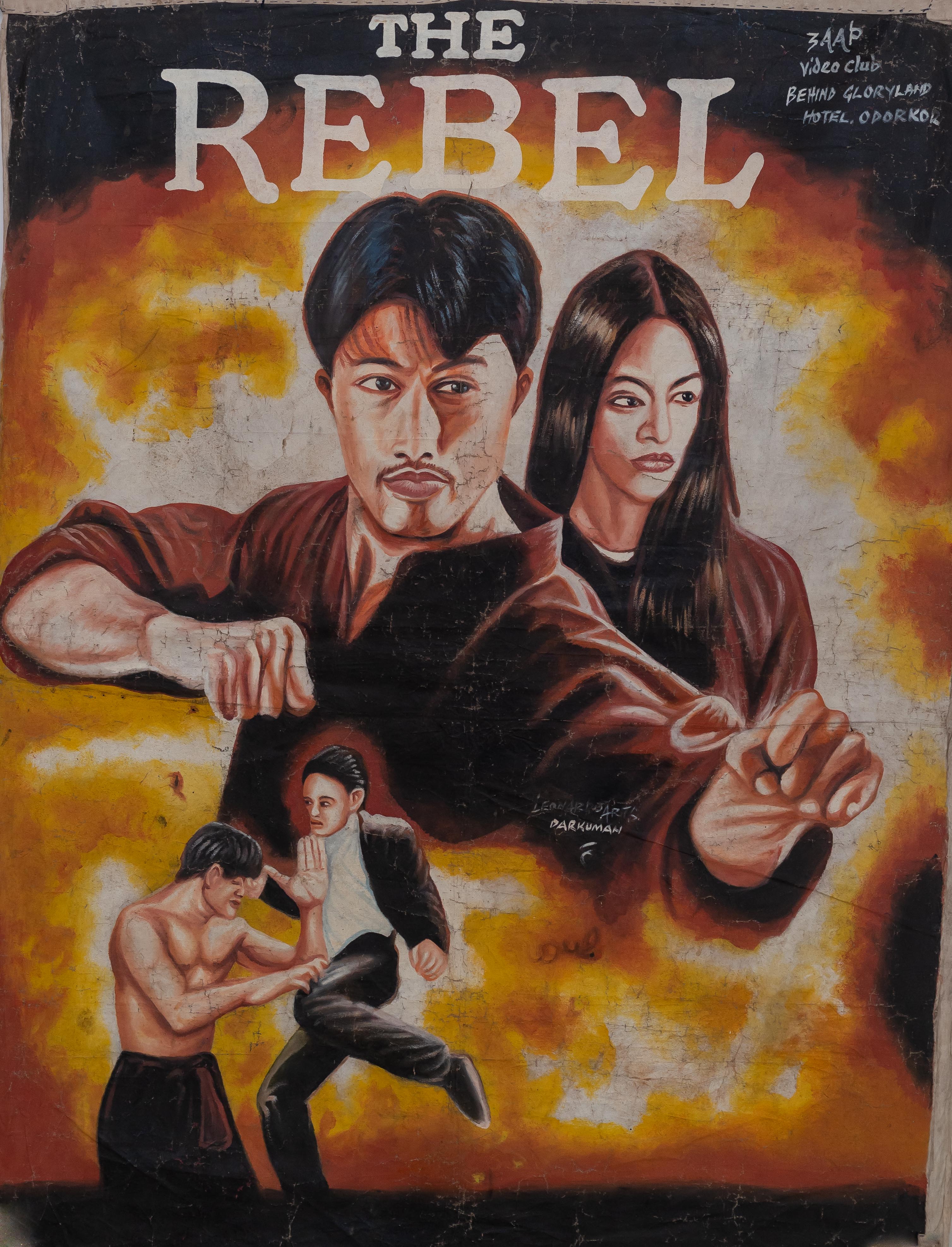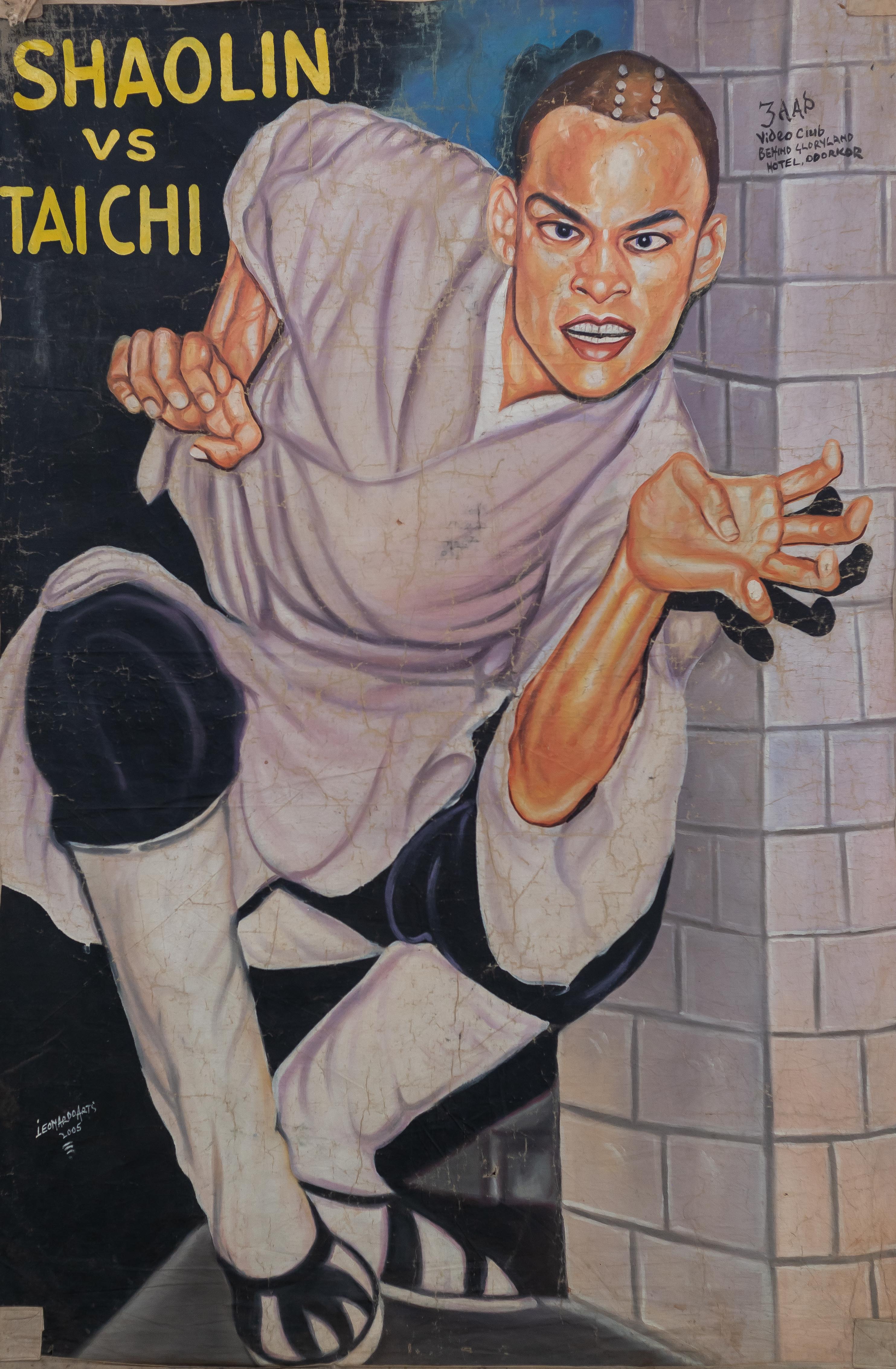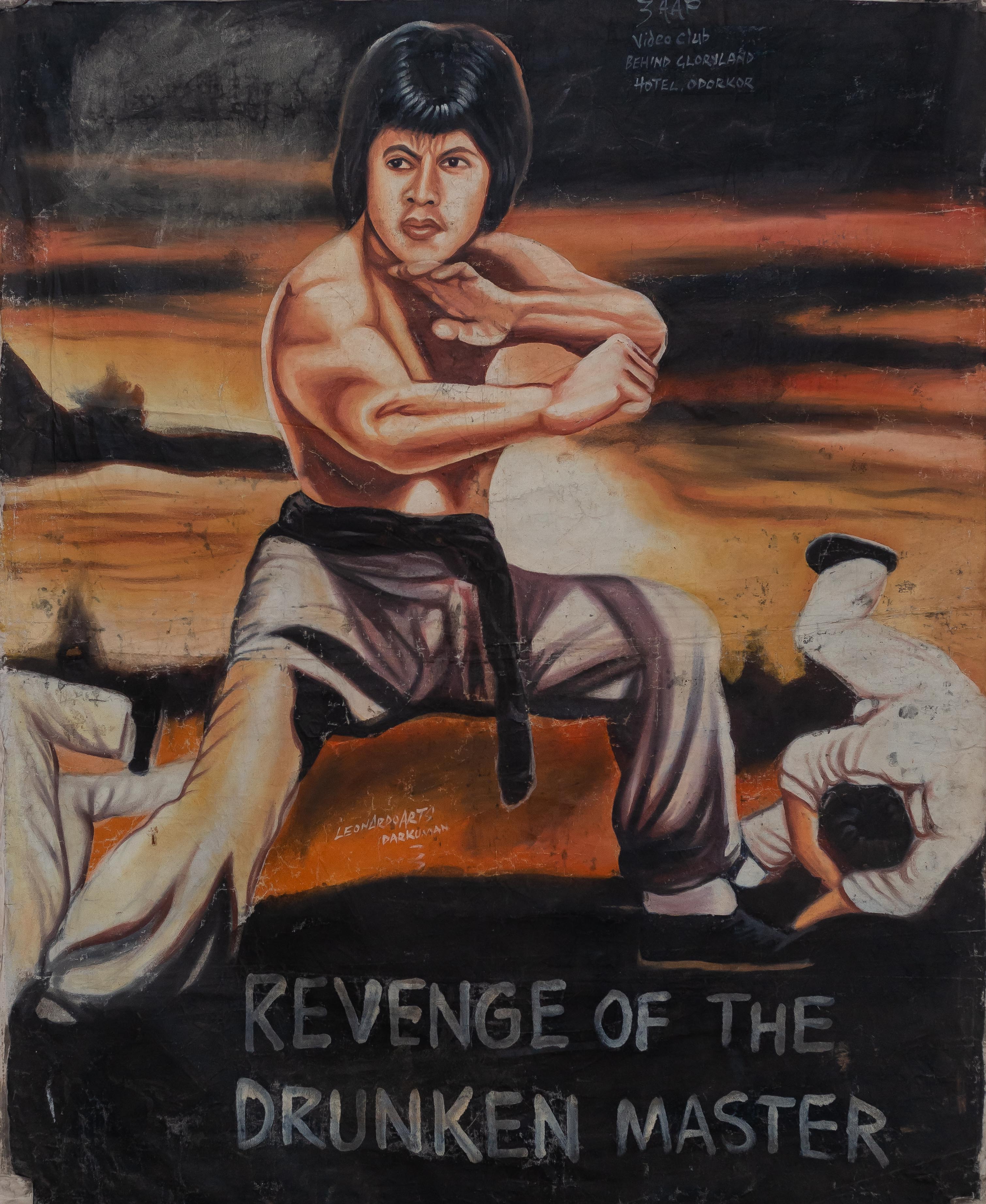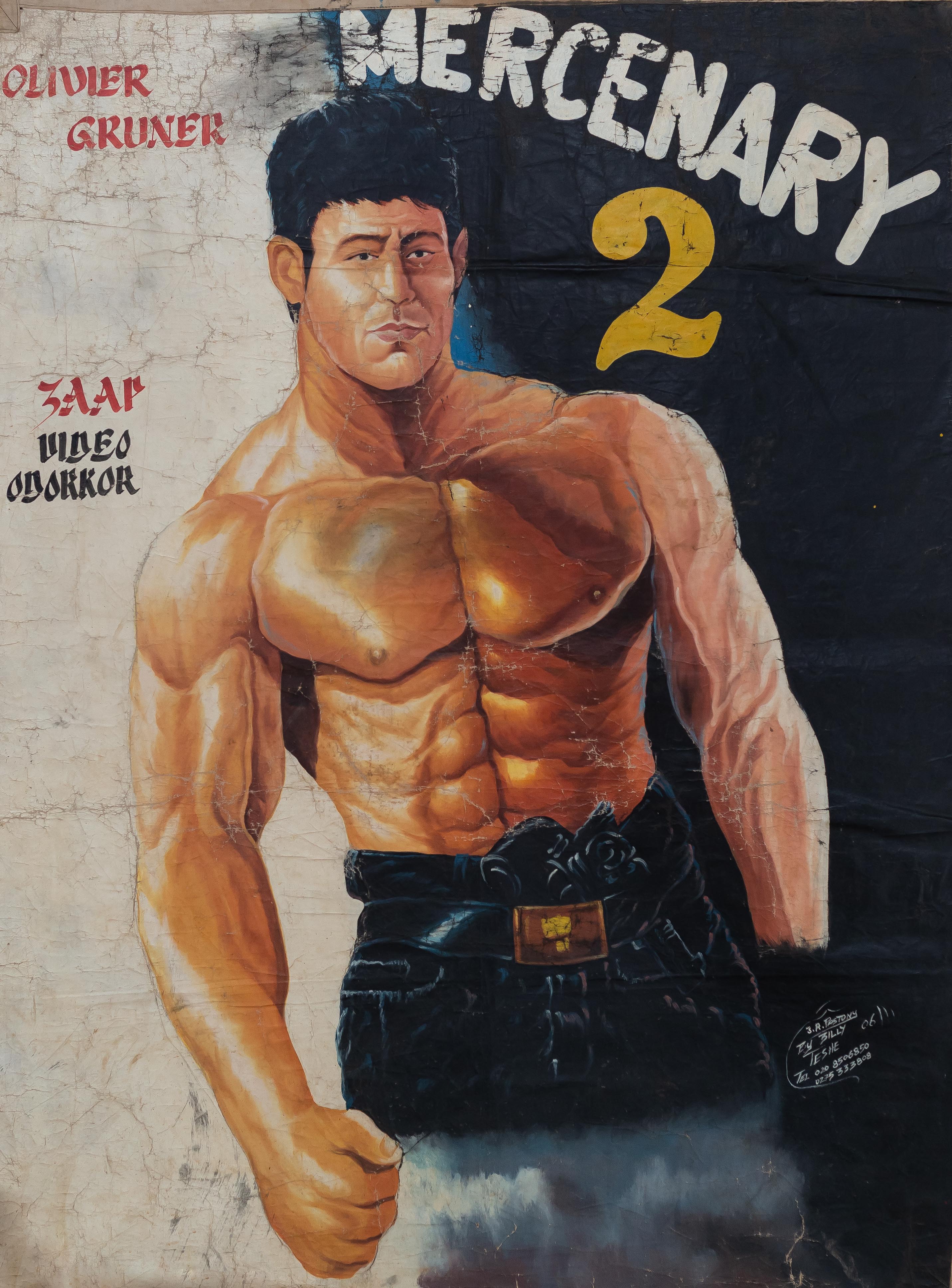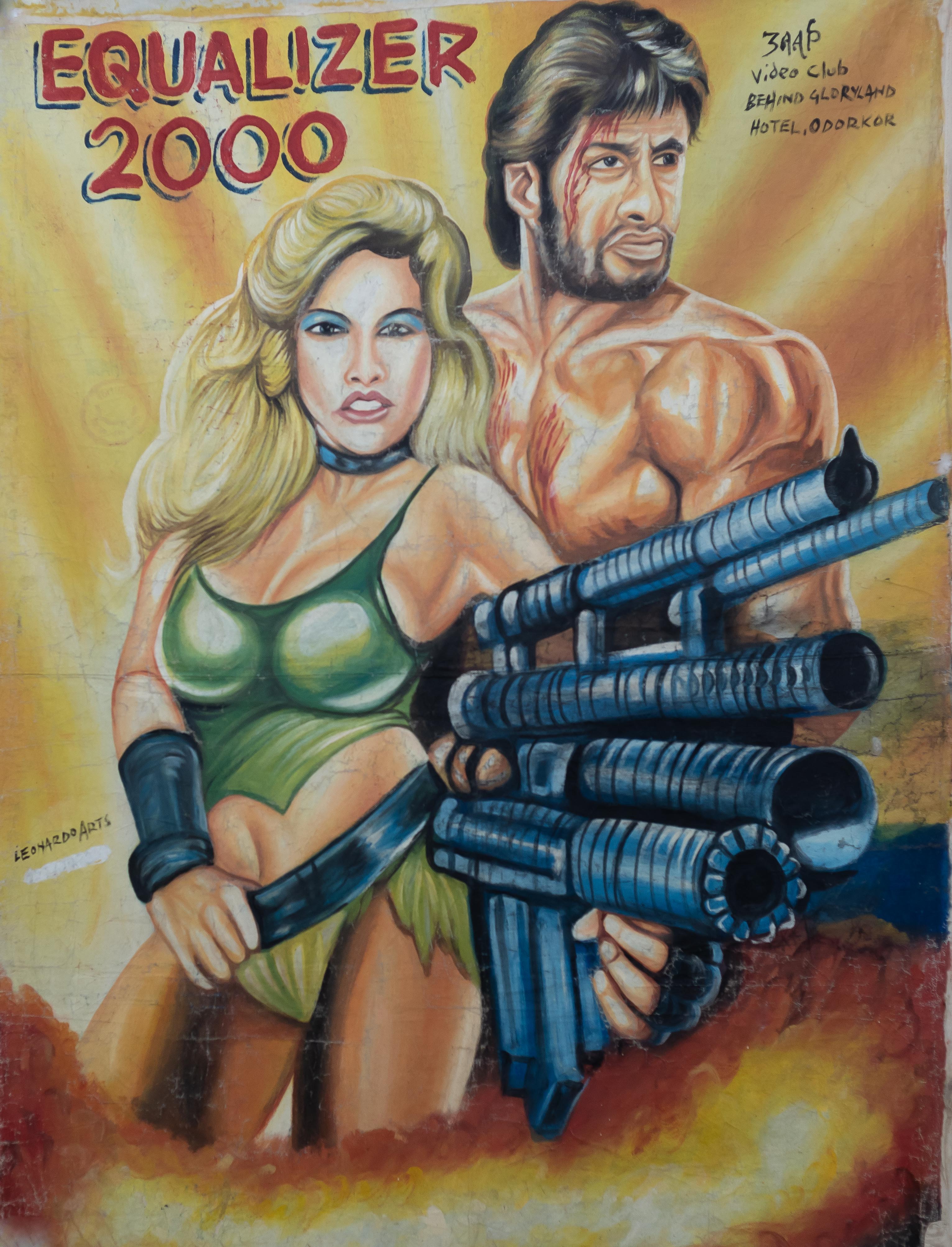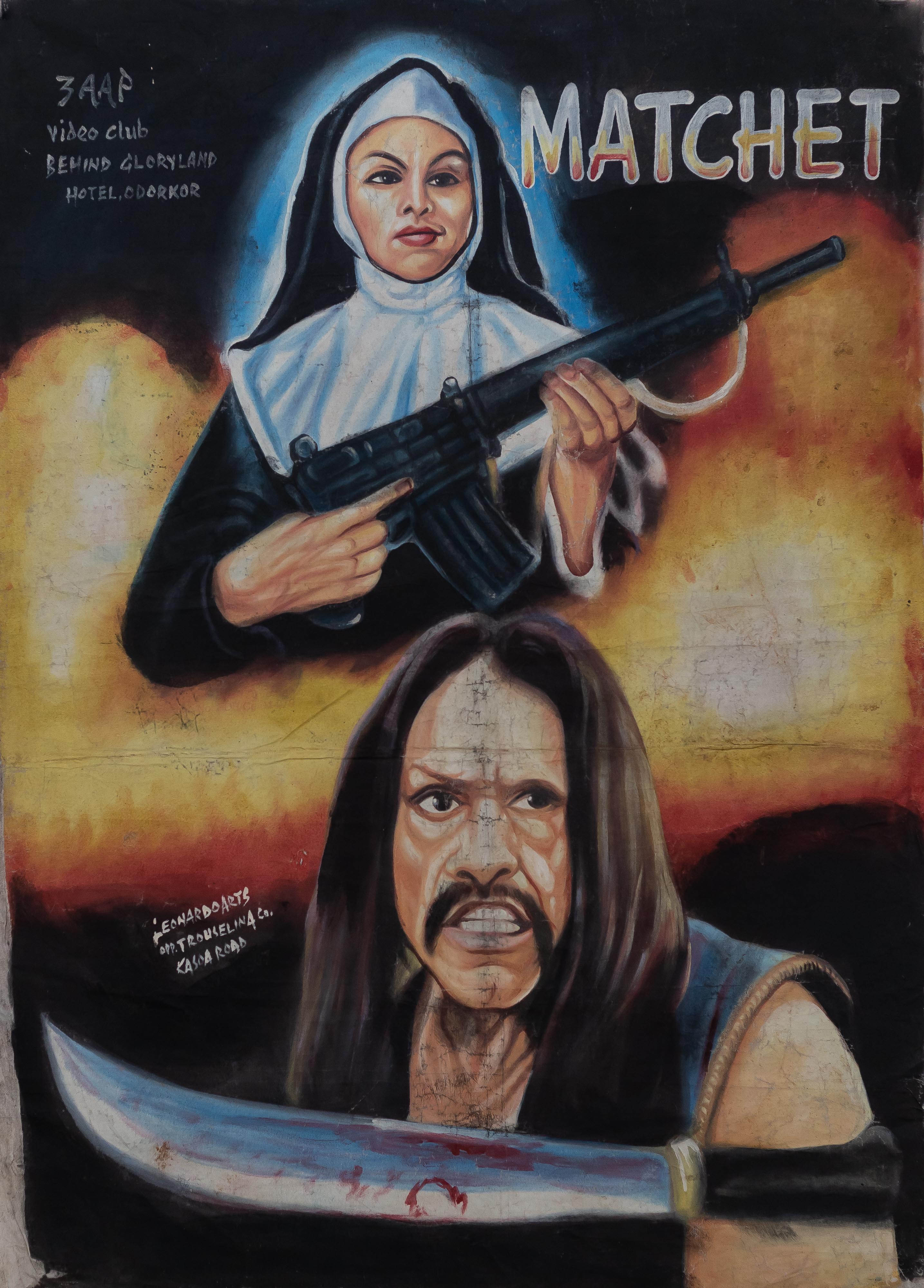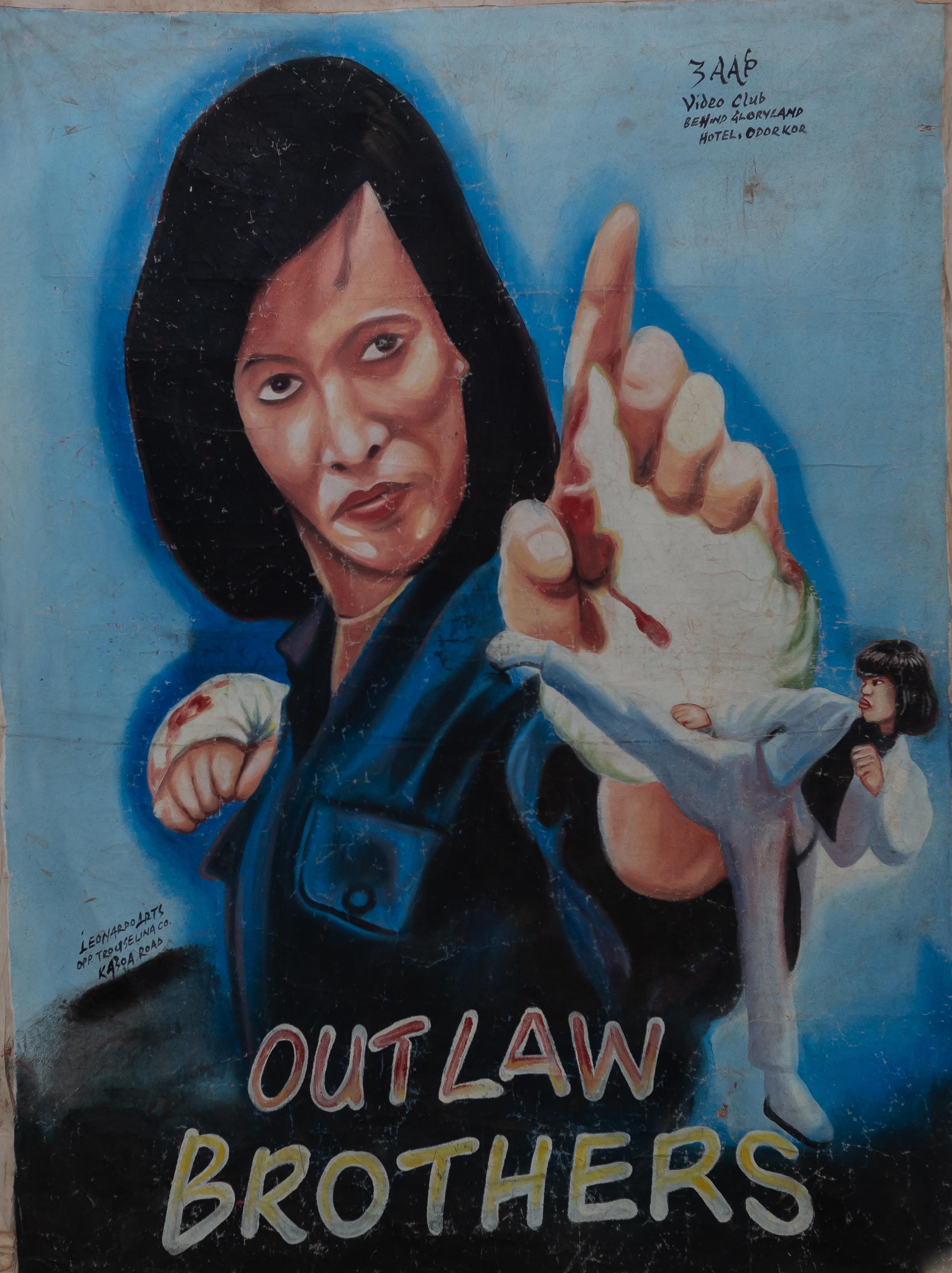6 March 2021 – 17 April 2021
Suɔmɔ Hi Fe Shika
Alpha and Omega
Awal Shetty, Billy
C.A Wisely
D.A Jasper
Faith Art
Leonardo Arts
O.A. Heavy-J
An exhibition of Film posters, Barbering and Salon Signages from the collection of Dr. Joseph Oduro-Frimpong
The paintings that are in the exhibition come from Dr. Joseph Oduro-Frimpong’s collection. Analogous to his academic research, Dr. Oduro-Frimpong collects hand-painted film posters, barbering and salon shop signages. These works are advertisement materials and belong to the vibrant visual pop-culture in Ghana, a genre that includes tro-tro signages and decorative paintings on shop fronts, and kiosks. The works were produced by artists from Sign-painting workshops. Artists whose works are included in the exhibition are Alpha and Omega, Awal Shetty, Billy, C.A Wisely, D.A Jasper, Faith Art, Leonardo Arts and O.A. Heavy-J.
The works have two elements: figurative painting and text. In the tradition of the Sign-painting workshops, apprenticeship is an institutionalised way of learning. The film posters retain the detail driven style of the coastal sign-painters. The salon and barbering signages, on the other hand, have been painted with thinly applied strokes which are associated with artists from the middle belt.
In the 1ate 1980s, economic fortune was getting worse in Ghana and the government heavily defunded filmmaking. But as the video format became widely available in cinemas, eager would-be filmmakers saw a new possibility. They began experimenting with home video equipment in making commercial movies. And so, in a period of national economic downturn, the cinema business boomed with the film posters as accomplices. The resulting movie industries including the English-speaking movies and Kumawood blossomed well into the early 2000s.
The text on the salon and barbering signages sometimes lift from Street Philosophy. The title of the exhibition Suɔmɔ Hi Fe Shika, a Ga phrase, translates as Love is better than Money. That view is ubiquitous in Ghanaian pop-culture. An easy recollection will be Kakaiku's Guitar Band’s Highlife song titled Odo Ye De Sen Sika.
The textural becomes a way of exerting commentaries. These commentaries range from religious sentiments to general life observations. Dr. Oduro-Frimpong, the collector, participates in this vernacular language when he commissions artists to make signages like Say No to Brazilian Hair.
For the audience whose earlier lives might have interacted with these archives, the works become monuments. Of nostalgia. Of entrepreneurship. Of pain, sometimes. It becomes a cultural method with which to think. In essence, what is being suggested is the same as when John Berger says he presents you with one thing in order to talk about something else entirely.
One way of thinking about this is to consider the placeness from which these works were originally intended to function that is the cinema, barbering shops and salons. At the cinema, we get entertained. We dream. We cry. In the barbering shops and salons, we consider the politics of hair and beauty.
Here is a suggestion. May you take this exhibition as a theatre of our making. And dream a little.
The paintings that are in the exhibition come from Dr. Joseph Oduro-Frimpong’s collection. Analogous to his academic research, Dr. Oduro-Frimpong collects hand-painted film posters, barbering and salon shop signages. These works are advertisement materials and belong to the vibrant visual pop-culture in Ghana, a genre that includes tro-tro signages and decorative paintings on shop fronts, and kiosks. The works were produced by artists from Sign-painting workshops. Artists whose works are included in the exhibition are Alpha and Omega, Awal Shetty, Billy, C.A Wisely, D.A Jasper, Faith Art, Leonardo Arts and O.A. Heavy-J.
The works have two elements: figurative painting and text. In the tradition of the Sign-painting workshops, apprenticeship is an institutionalised way of learning. The film posters retain the detail driven style of the coastal sign-painters. The salon and barbering signages, on the other hand, have been painted with thinly applied strokes which are associated with artists from the middle belt.
In the 1ate 1980s, economic fortune was getting worse in Ghana and the government heavily defunded filmmaking. But as the video format became widely available in cinemas, eager would-be filmmakers saw a new possibility. They began experimenting with home video equipment in making commercial movies. And so, in a period of national economic downturn, the cinema business boomed with the film posters as accomplices. The resulting movie industries including the English-speaking movies and Kumawood blossomed well into the early 2000s.
The text on the salon and barbering signages sometimes lift from Street Philosophy. The title of the exhibition Suɔmɔ Hi Fe Shika, a Ga phrase, translates as Love is better than Money. That view is ubiquitous in Ghanaian pop-culture. An easy recollection will be Kakaiku's Guitar Band’s Highlife song titled Odo Ye De Sen Sika.
The textural becomes a way of exerting commentaries. These commentaries range from religious sentiments to general life observations. Dr. Oduro-Frimpong, the collector, participates in this vernacular language when he commissions artists to make signages like Say No to Brazilian Hair.
For the audience whose earlier lives might have interacted with these archives, the works become monuments. Of nostalgia. Of entrepreneurship. Of pain, sometimes. It becomes a cultural method with which to think. In essence, what is being suggested is the same as when John Berger says he presents you with one thing in order to talk about something else entirely.
One way of thinking about this is to consider the placeness from which these works were originally intended to function that is the cinema, barbering shops and salons. At the cinema, we get entertained. We dream. We cry. In the barbering shops and salons, we consider the politics of hair and beauty.
Here is a suggestion. May you take this exhibition as a theatre of our making. And dream a little.
